Food in Bolivia
As is the blog tradition – now is the time for a food post from a country we left months ago! This time it’s Bolivia – and arriving here from Chile we entered an entirely different food world.
The altiplano dominates Bolivia, and more than half of Bolivia’s population is indigenous – so the cuisine is heavily influenced by these two factors. The eastern part of Bolivia though is hot, low and borders Brazil – so different influences again.
Bolivia is also the poorest country in South America – and because of this there are very few big supermarket chains present. You pretty much have to buy all your food from markets or street stalls.
So although at times it was challenging to find something to eat that we hadn’t had before – Bolivia did have a few food items that we absolutely loved 🙂 Anyway, down to business…
Breakfast
Many of the hostals in Bolivia included breakfast – generally speaking you always got coffee, bread, and some kind of jam. Usually the coffee was pretty bad, the bread was sweet, and the jam pretty average. The next most common addition was eggs. The egg policy of the hostals varied wildly – sometimes they were included, sometimes you had to pay extra. Sometimes you were offered a choice between scrambled and fried, sometimes they just plonked a fried egg down in front of you. Sometimes you would get one measly egg, sometimes you would get more than one. BUT, the most frustrating of all…. some places would give you eggs only on SOME days (of course they would never tell you which days – probably because it was based on if the person there felt like cooking them or not….). So on the first day, you get some eggs and enjoy egg on toast – but on the second day you sit waiting… not sure if an egg is coming or not… wondering whether to go ahead and put jam on the toast…
Even worse, the other way around – no eggs on the first day, so on the second day you eat all the bread with jam, and then suddenly eggs appear when you have eaten all the bread and are already nearly full… yes it’s a tough life.. 🙂
These breakfasts they call ‘continental’ or ‘american’ breakfasts – yes, strange eh? – but what they really mean is ‘gringo’ breakfast – this breakfast is what foreigners want to eat. The better places even throw in some fruit and cheese as well. What locals like to eat for breakfast though are variations of fried empanadas, donuts, and bread and cheese.
So, let me start with ‘Api and pastel’ – although this is breakfast food in Bolivia, it’s also an afternoon snack – in fact a lot of Bolvian breakfast items are also afternoon snacks. I think because it’s usually freezing cold in the morning, and also freezing cold in the late afternoon, that the same food rules apply… 🙂 Because we mostly got breakfast provided, we consumed our ‘api and pastel’ in the afternoons – and believe me, we took it SERIOUSLY! ‘Api and pastel’ was pretty much our favourite thing to consume in Bolivia, and we went out of our way to find it whenever we could.
Api is made from corn – either purple corn (called ‘api morado’), or white corn (called ‘api blanco’) or even a mix of the two! 🙂 It also contains sugar, cinammon, and whatever else the person making it decides to put in it to give it a secret flavour. It’s served HOT.
‘Pastel’ is basically a fried cheese empanada – usually with icing sugar sprinkled on top – that might sound weird – but it’s awesome 🙂 Because finding and consuming ‘api and pastel’ became our favourite afternoon pastime in Bolivia, it’s appropriate for me to present here a gallery of ‘api and pastel’ 🙂 🙂
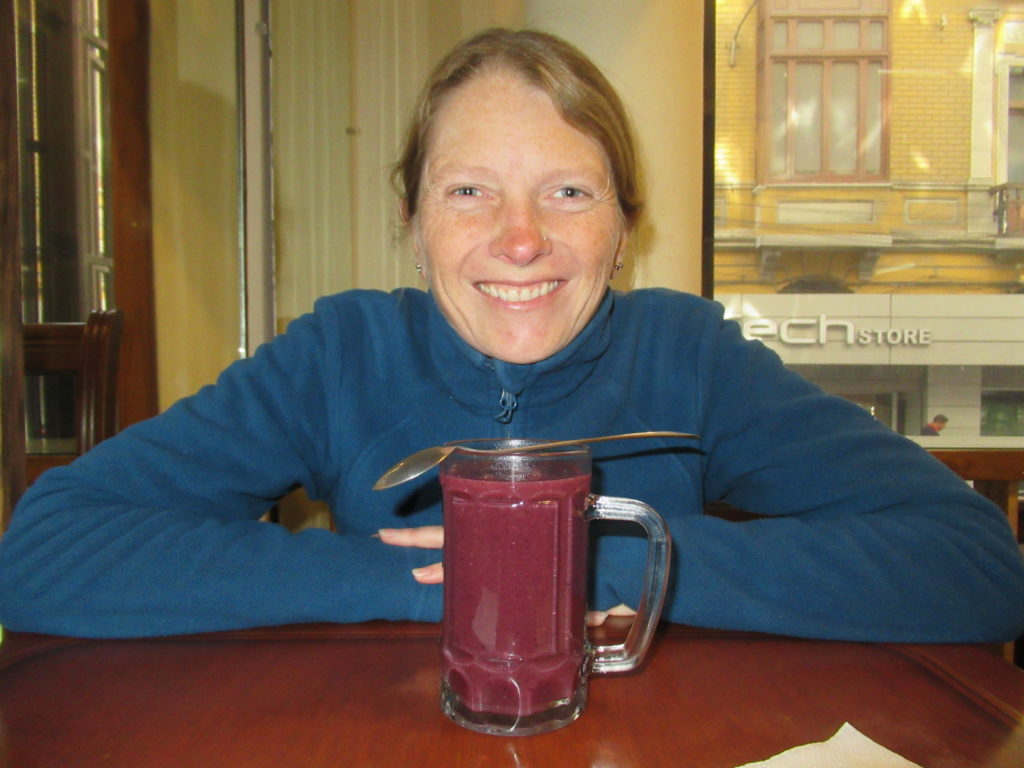
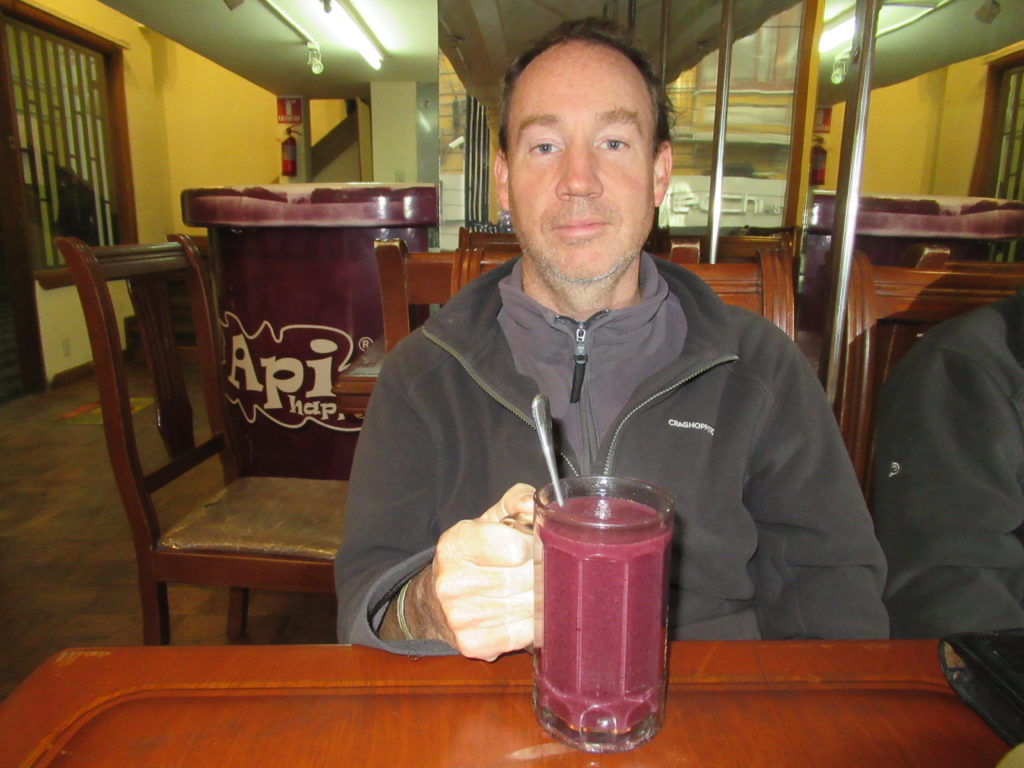
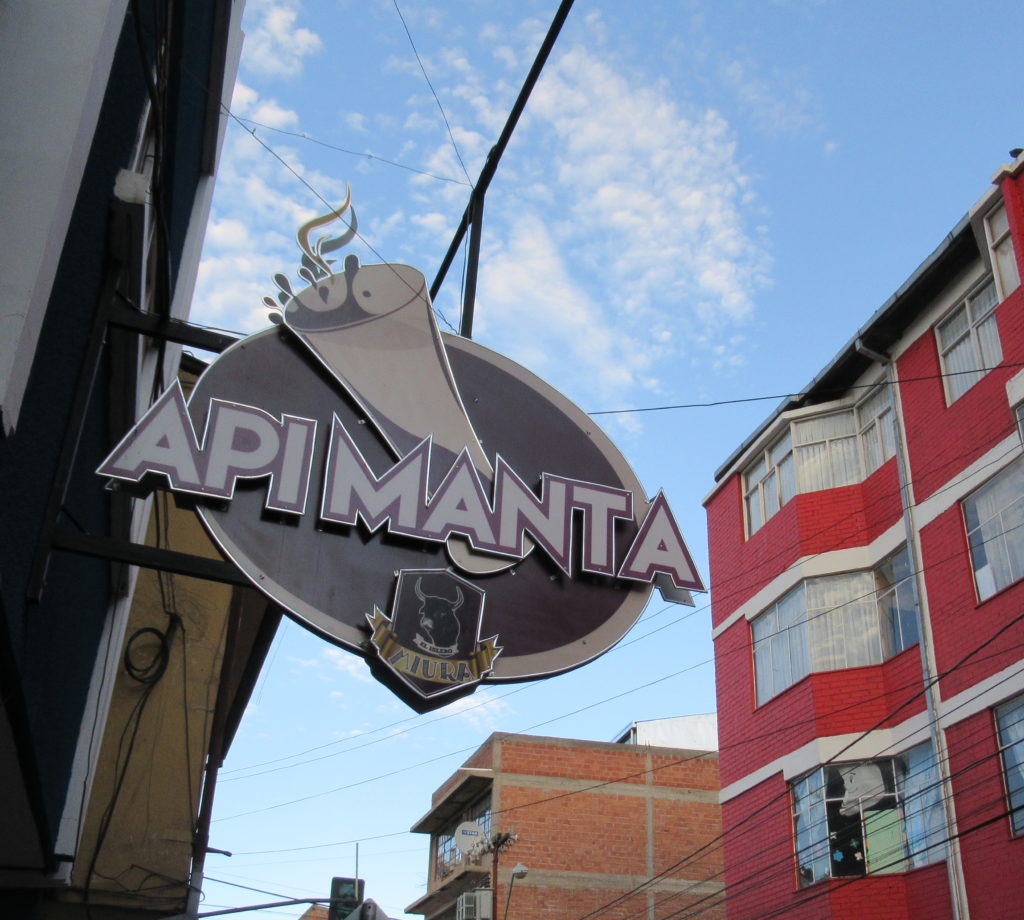
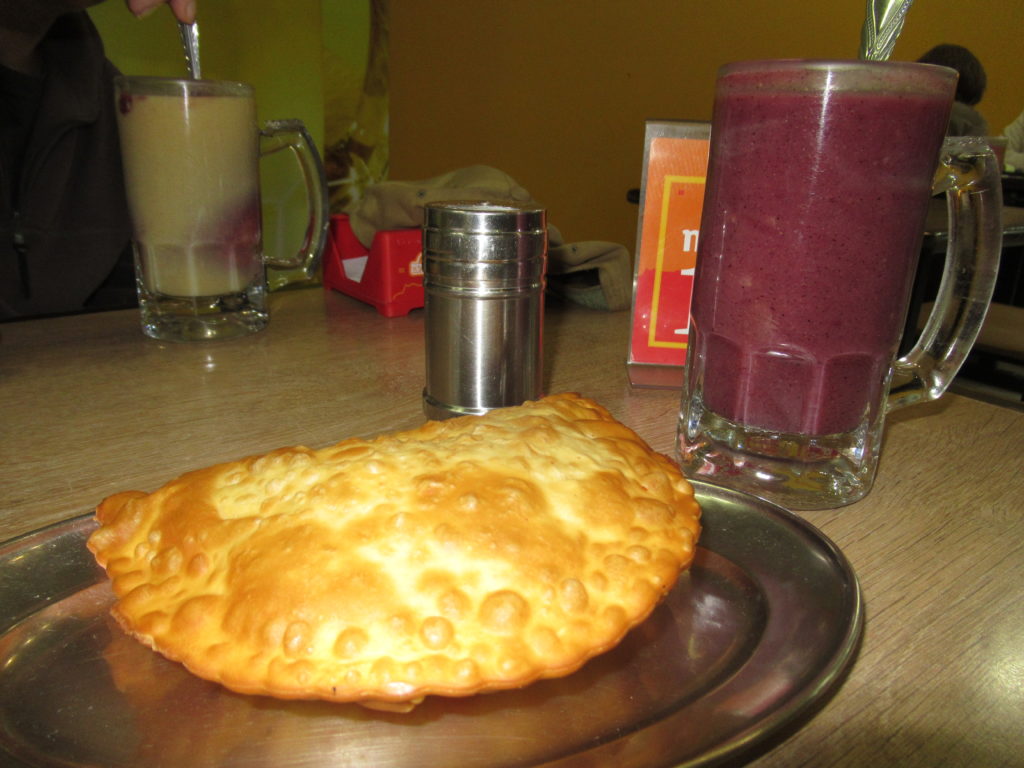
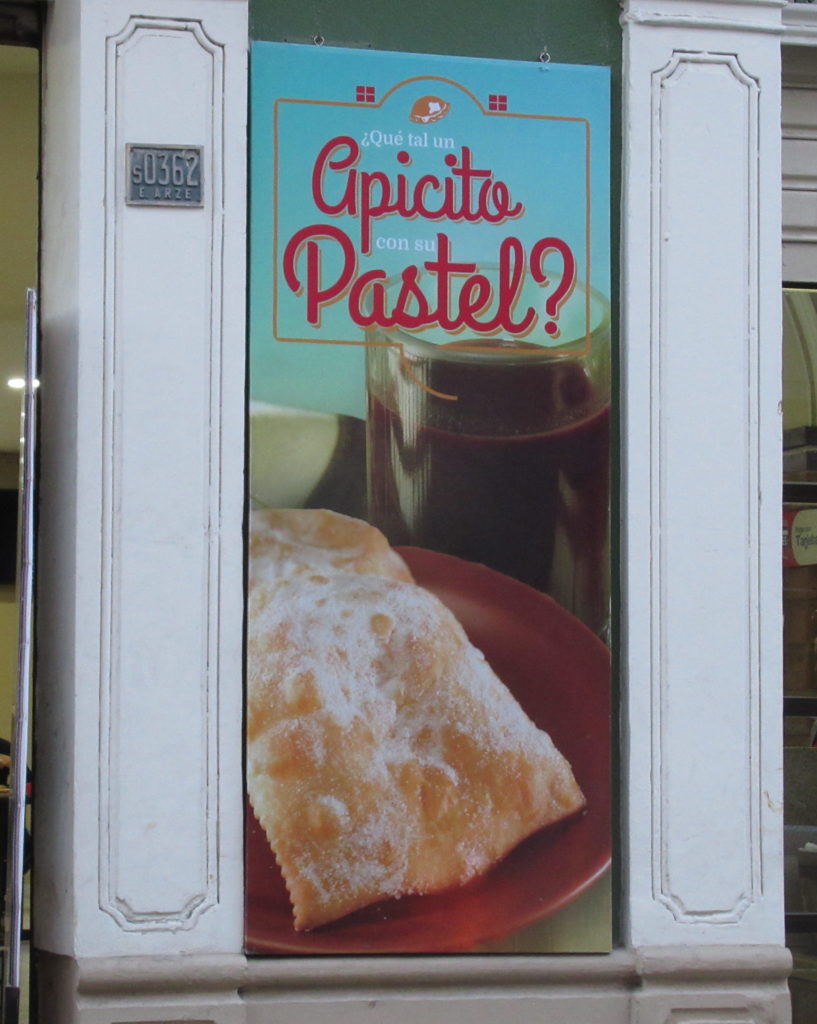

OK… clearly I’ve digressed from breakfast somewhat – but I got a bit overexcited about the api and pastel 🙂
Now, if you remember – I mentioned that it was usually very cold in Bolivia…so you might be thinking that therefore it would be great to nip into a nice warm cafe for a hot drink or some lunch to warm yourself up… well, it would – but that isn’t really going to happen very much – because pretty much nowhere has any heating. I can honestly say that we didn’t eat a SINGLE breakfast in the Bolivian altiplano where we weren’t wearing thermals, a jacket, a hat and a scarf – and although it heats up a bit later in the day if the sun comes out – many of our lunches were consumed wearing woolly hats as well.
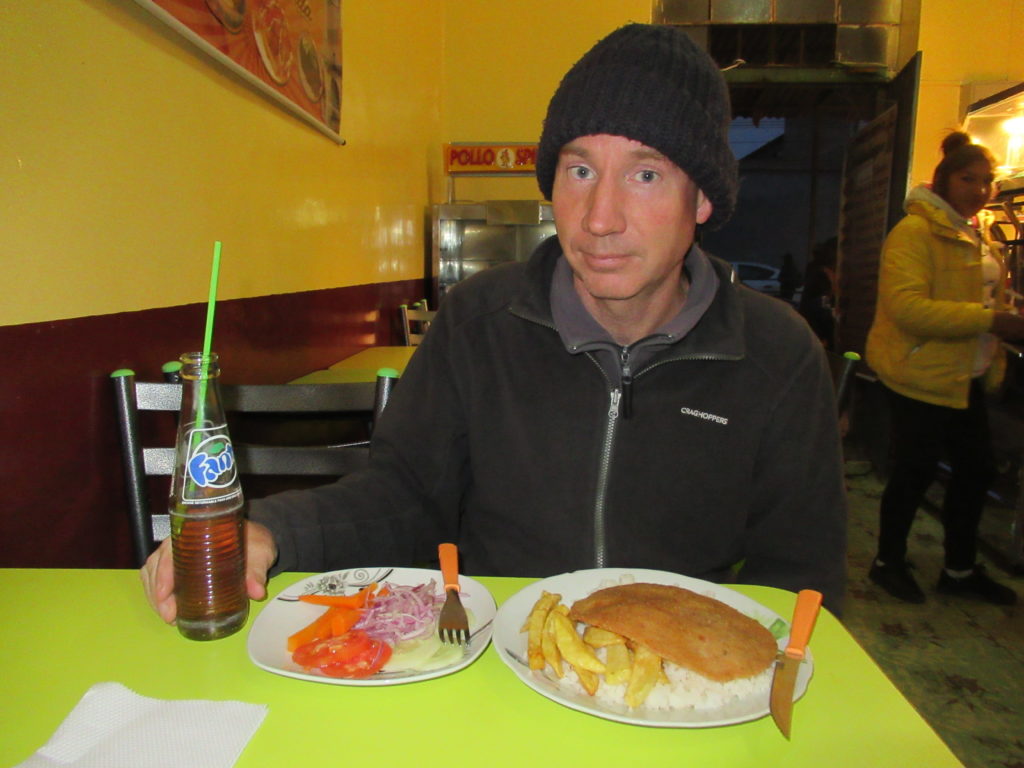
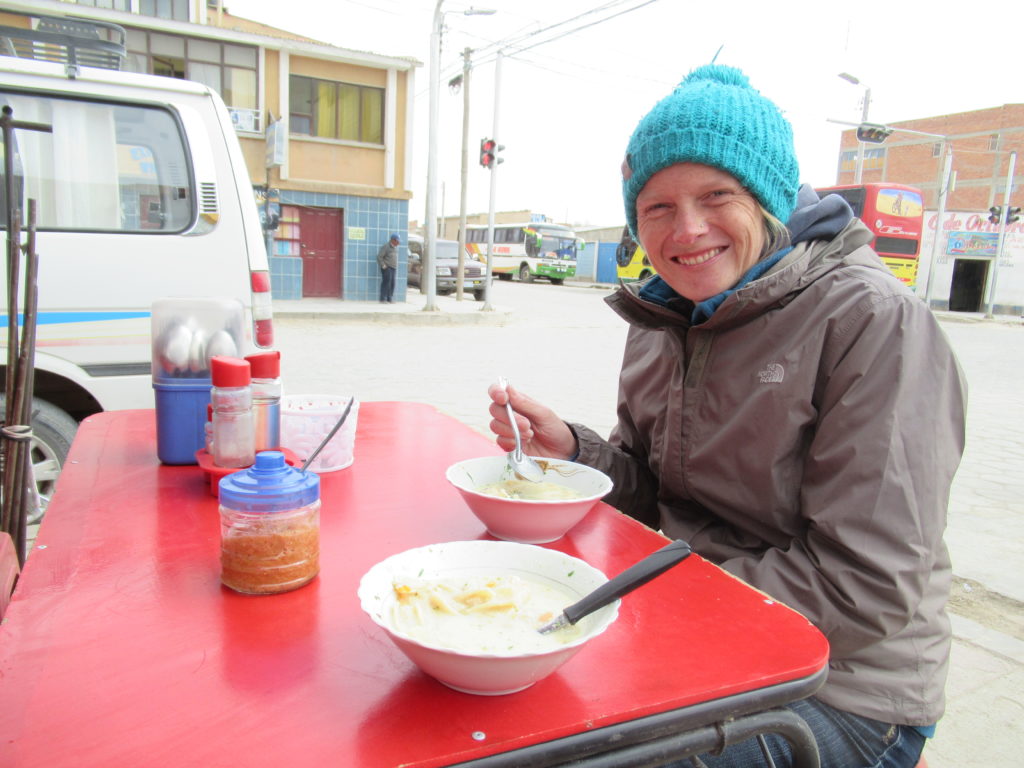
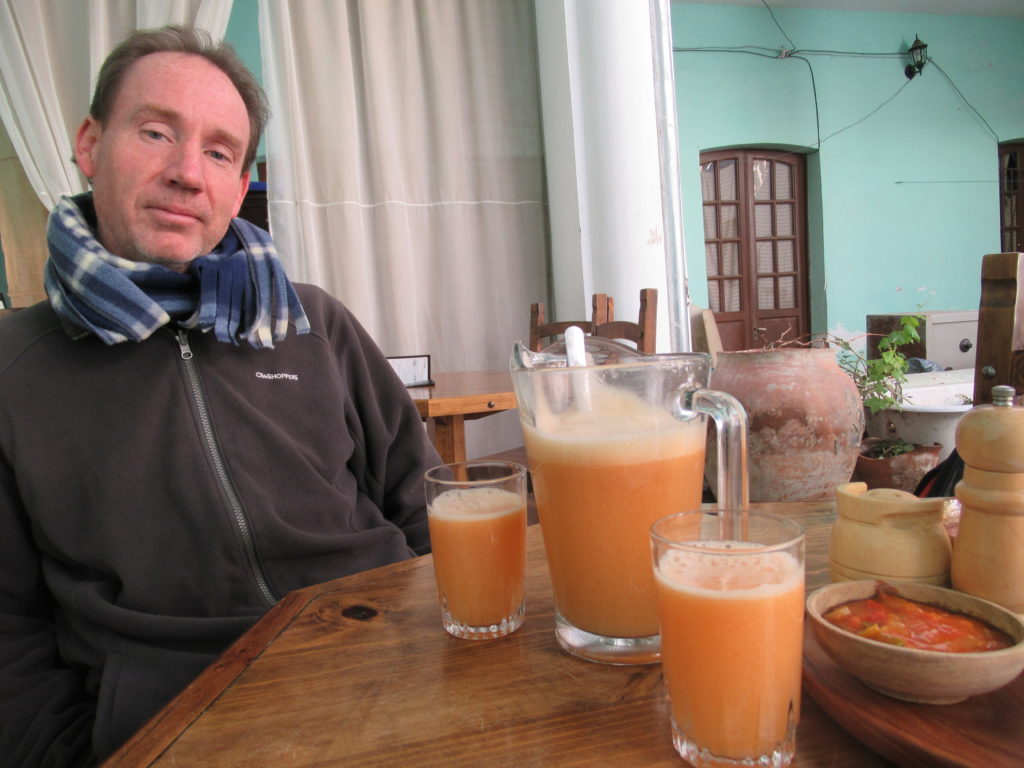
OK.. now I’ve been banging on about it being cold on the altiplano, let me mention that half of Bolivia is in the tropical lowlands. This part of Bolivia is not very famous – they have their own ideas about eating and drinking, and actually have an independence movement as they don’t like the altiplano people being in charge (more or less…).
In the lowlands, a favourite breakfast item is called a salteña – it’s an empanada with a savory filling of beef, pork, or chicken. Now, at the best of times I’m not sure if that’s a good breakfast food – and having tried them once, we vowed never to repeat the experience…
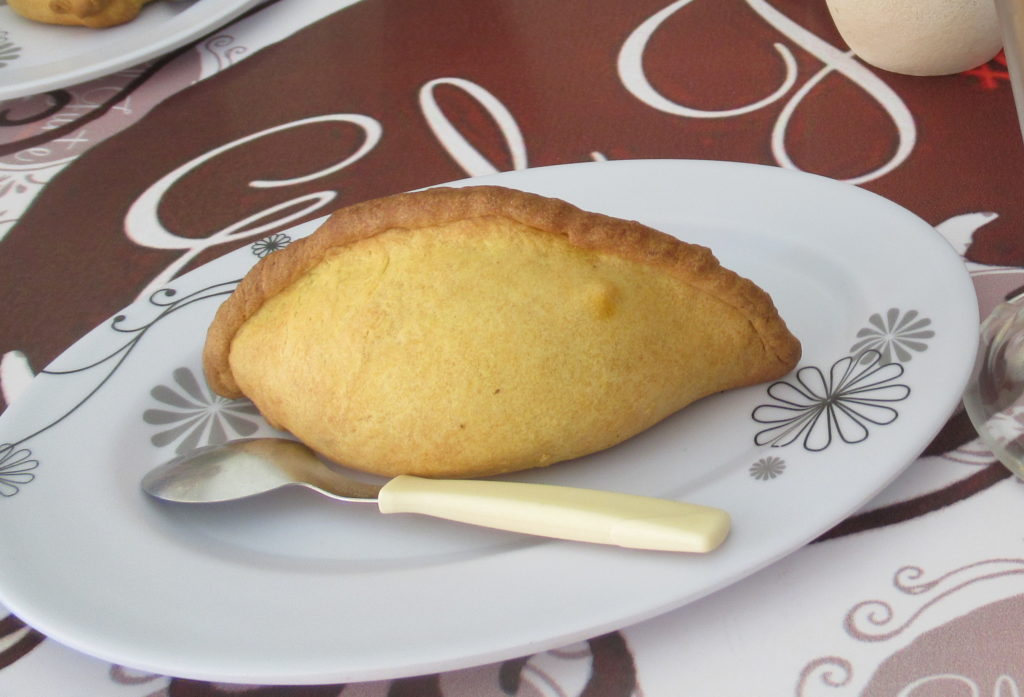
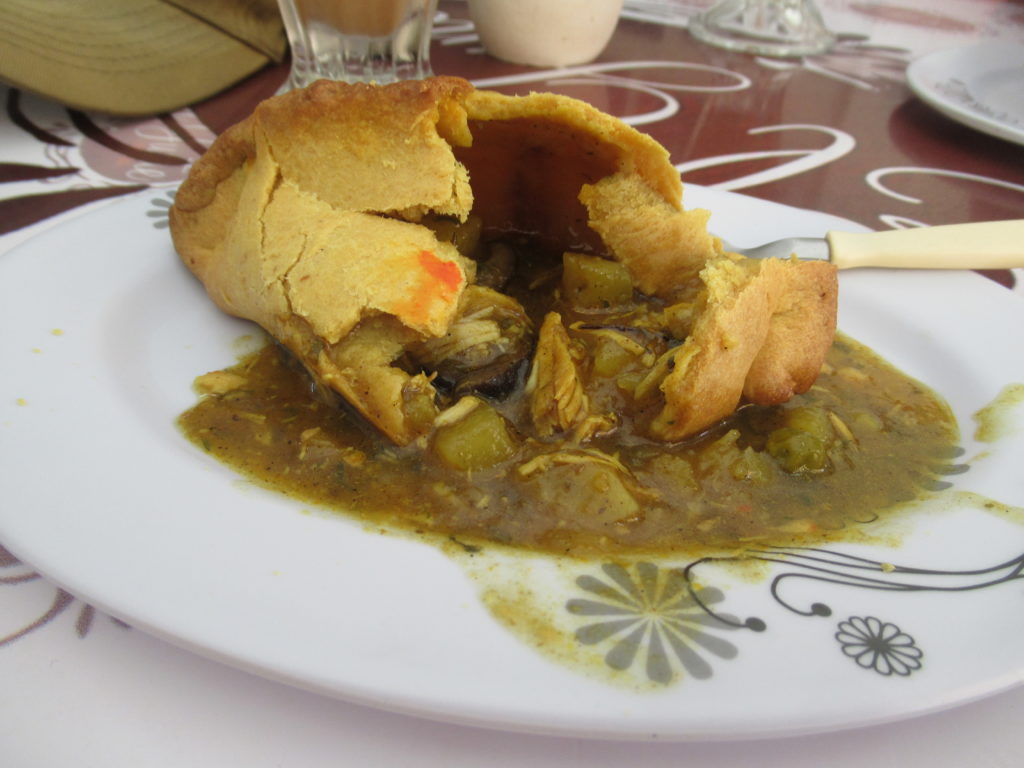
The concept is OK, but there are two problems – one is that the filling is very liquidy – as seen above – it’s like having gravy for breakfast…. 🙁 But the real problem is that the outside pastry casing is REALLY sweet – yes, sweet on the outside, gravy on the inside… it was not something that our western tastebuds could adapt to! 🙂
So, swiftly moving on to another lowlands breakfast item – ‘masaco’. Masaco is made from either mashed plantain, or mashed yuca (also called manioc or cassava). It’s mixed with cheese and/or meat and it’s pretty good (In CC’s view, only the cheese version is good 🙂 )

And continuing the whole breakfast/afternoon snack crossover thing – it’s also available as an afternoon snack in a kind of ‘cake’ form.
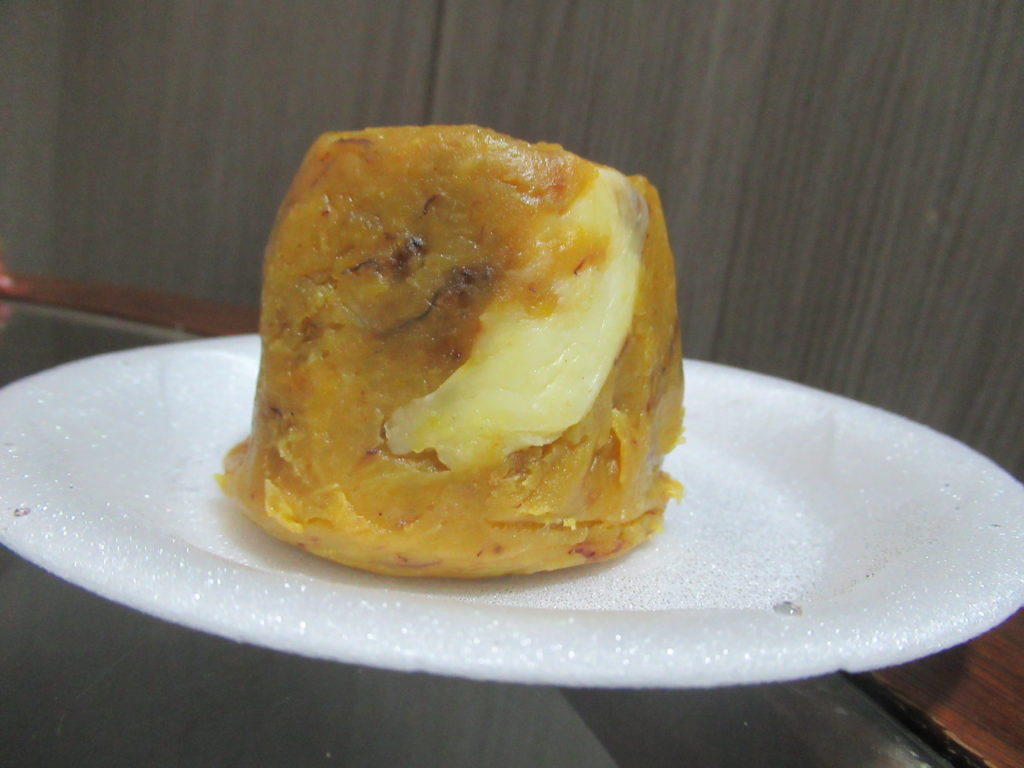
And finally – buñuelos – these are made of fried dough. How they look, when they are eaten, and what they are made with varies a lot all over South America. In Bolivia they are supposedly a breakfast food – but surely you can eat fried dough whenever you want?!
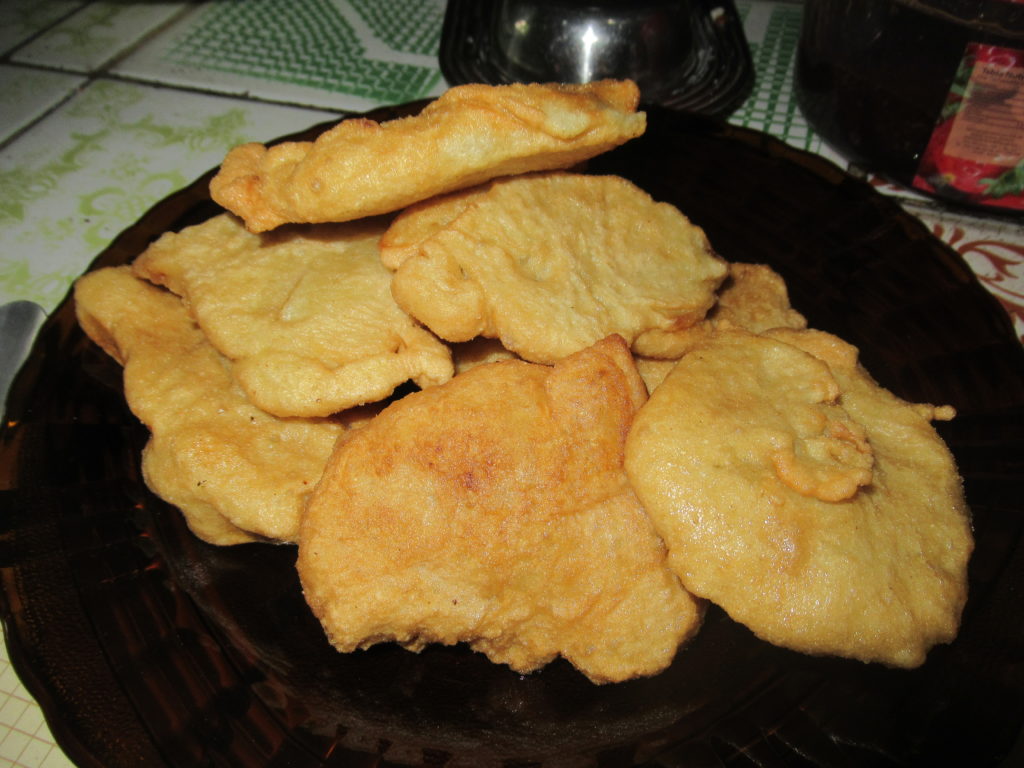
OK, so that was a pretty chaotic breakfast section… lunch in Bolivia though, was a bit more like in other countries – ‘menu del dia’ with soup and a main course.
Lunch
So let’s start with the soups! Bolivia is home to the BEST type of soup so far 🙂 It’s called ‘Sopa de Mani’, and it’s pretty easy to find. The basis of Sopa de Mani is peanuts (‘mani’ means peanut in case you didn’t work that out 🙂 ). Along with the peanut flavour, the soup comes in quite a few variations – eg.with or without chicken/meat, and with or without pasta/potatoes/chips. However it comes, it always tastes REALLY PEANUTTY! Mmmm 🙂
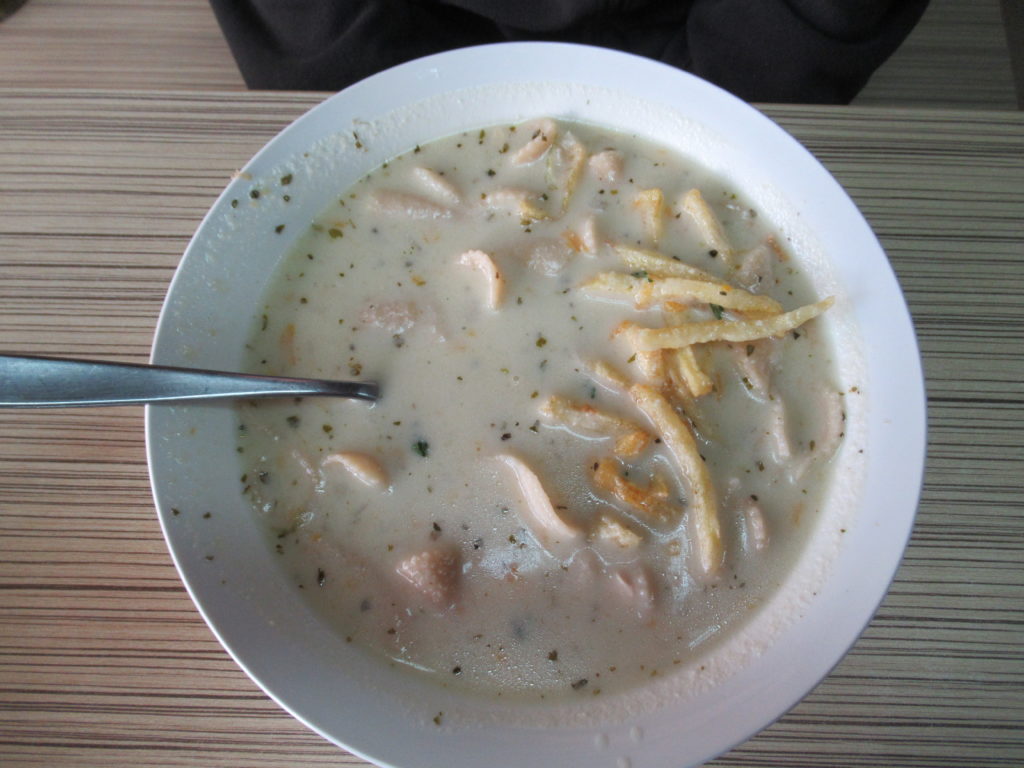
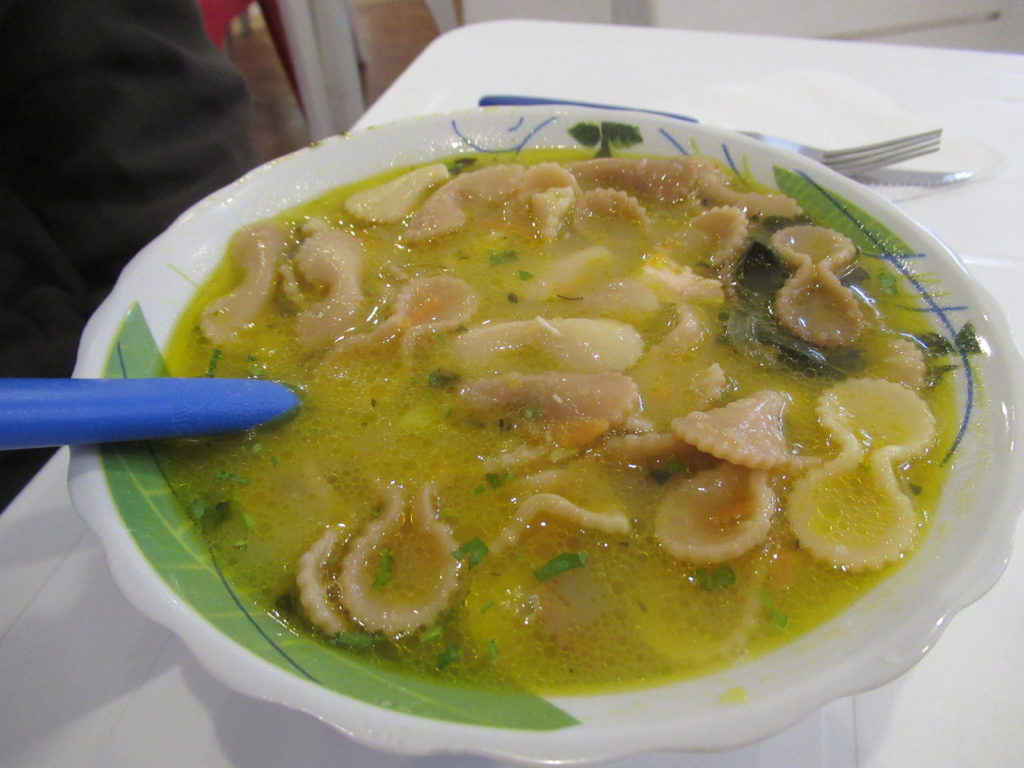
Other soups – especially ‘menu del dia’ soups – tended to be of the ‘watery liquid with a chunk of meat floating in the middle’ variety. Not particularly good – but gets you warmed up! No other soup really lived up to the standard of the mani soup. Even quinoa soup – which you would think might be pretty good – tended to be watery and meat filled 🙁
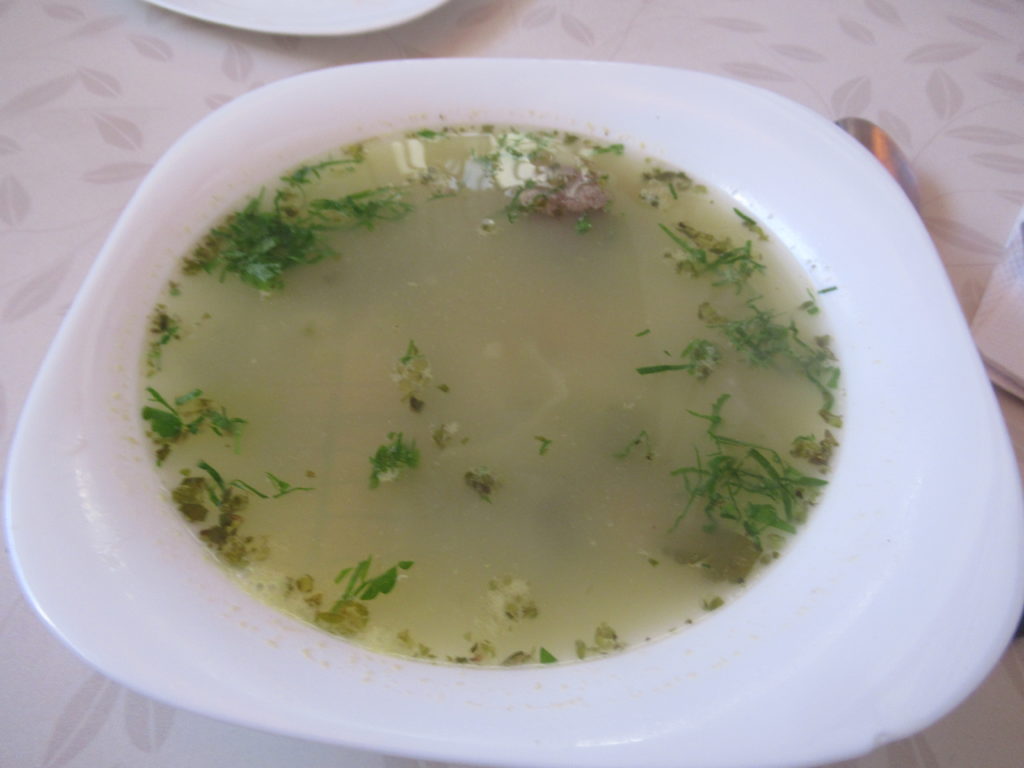
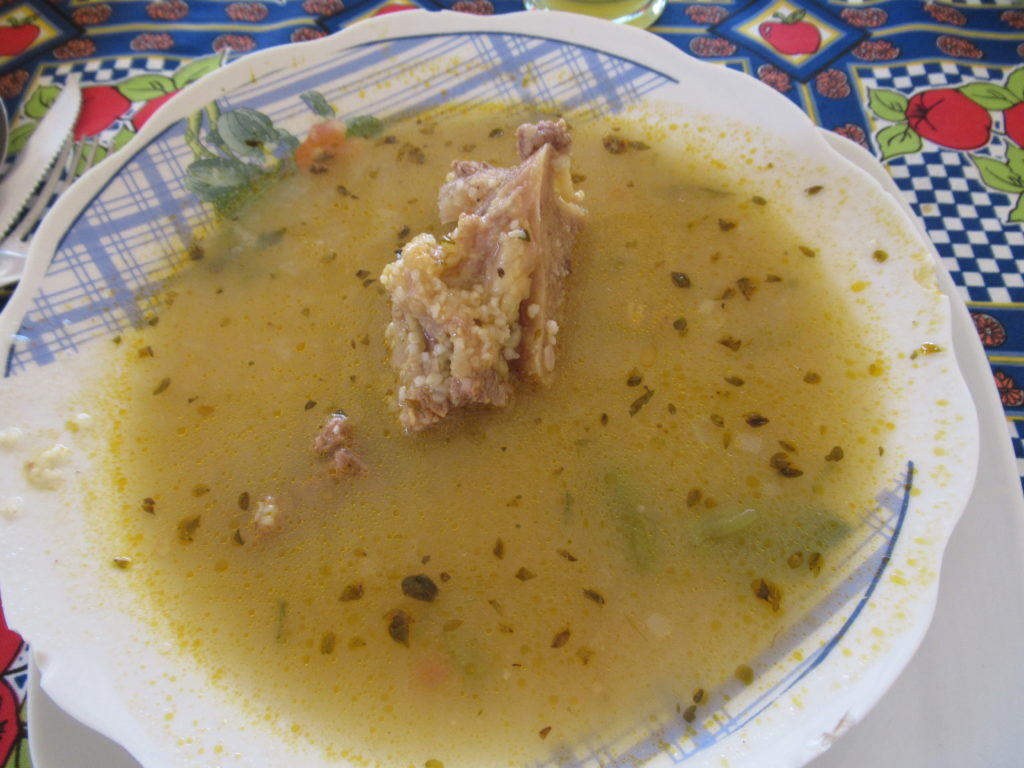
Moving on to main courses – these were usually pretty average, and would be meat, chicken or fish, plus some sides of rice, potatoes and a few veggies. Unfortunately the fish was often TINY and FULL of bones – so after a while we gave up on fish ‘menu del dias’. In general, the quality was pretty average and we often ate a series of ‘snack foods’ for lunch instead.
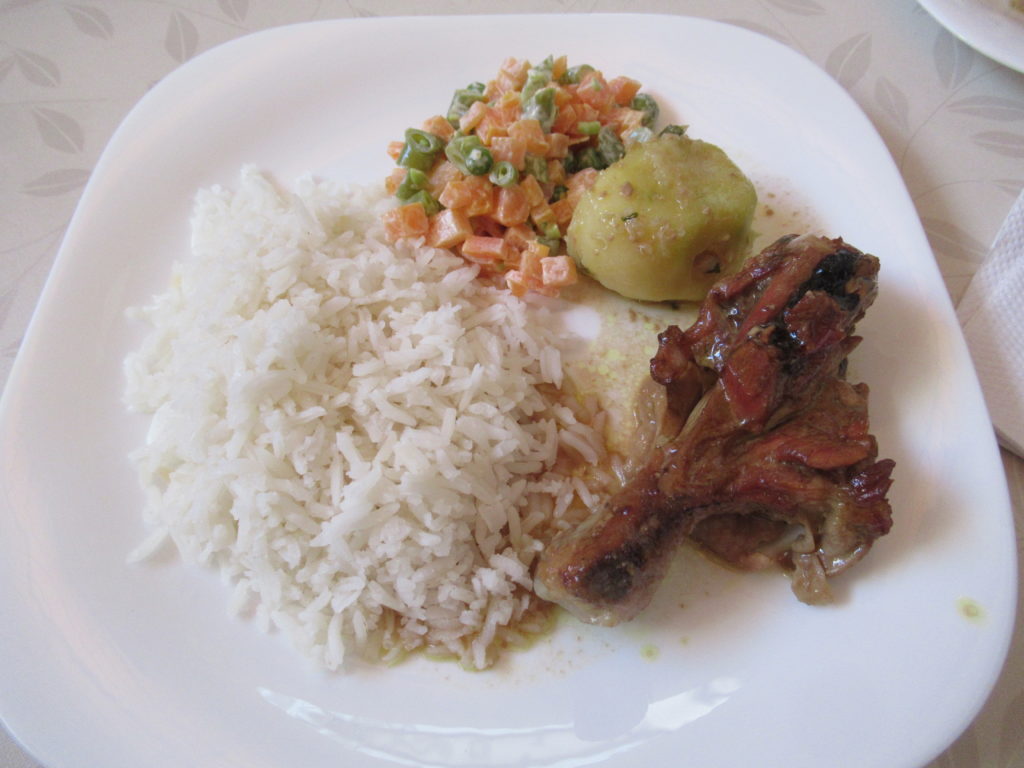
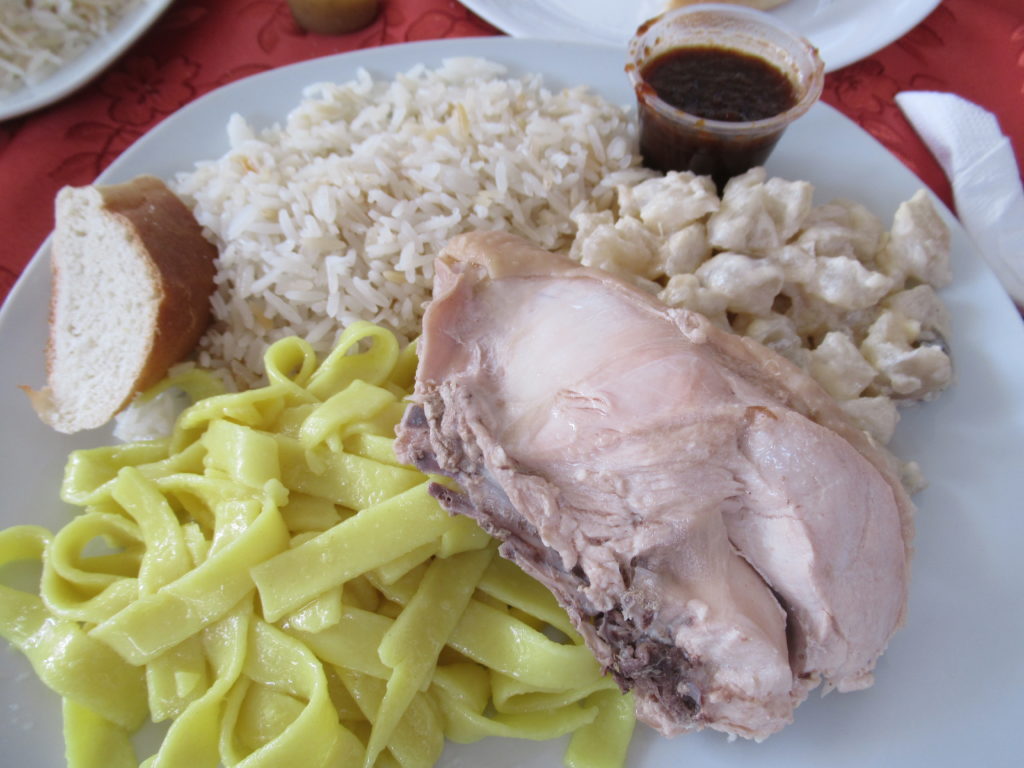
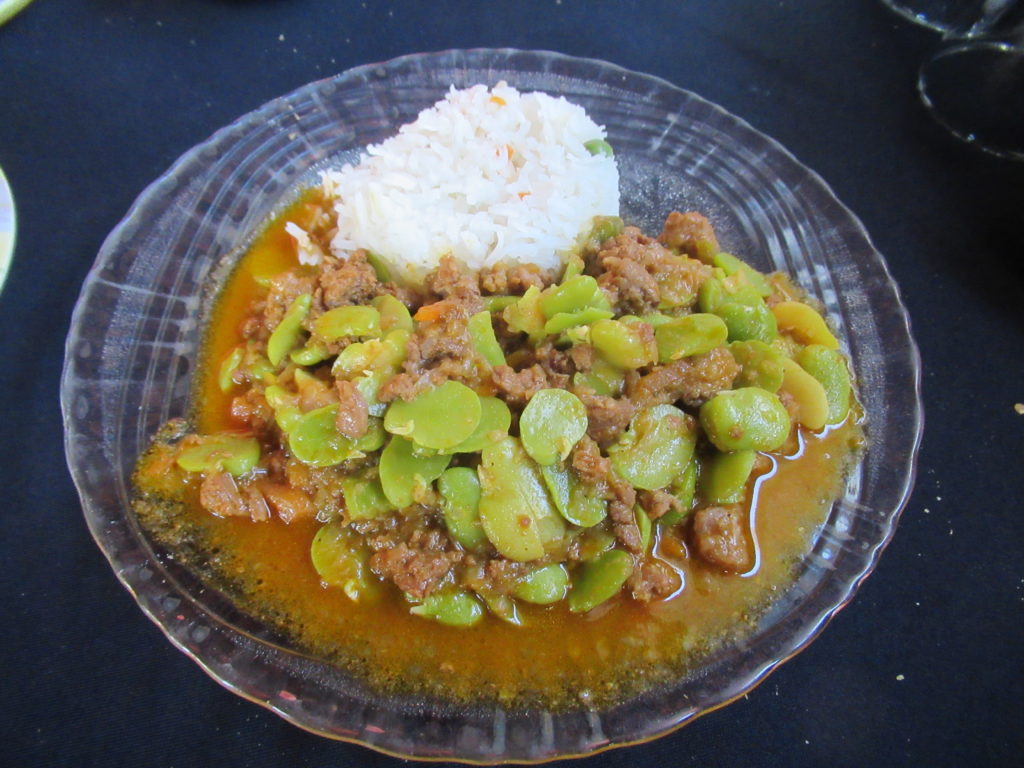
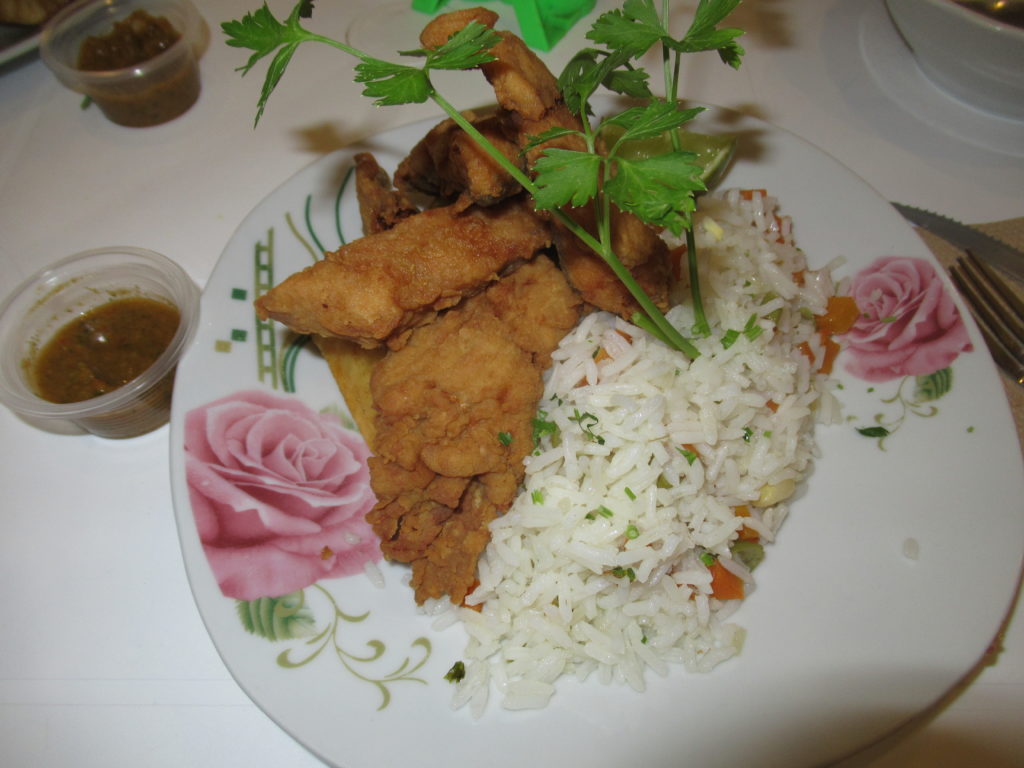
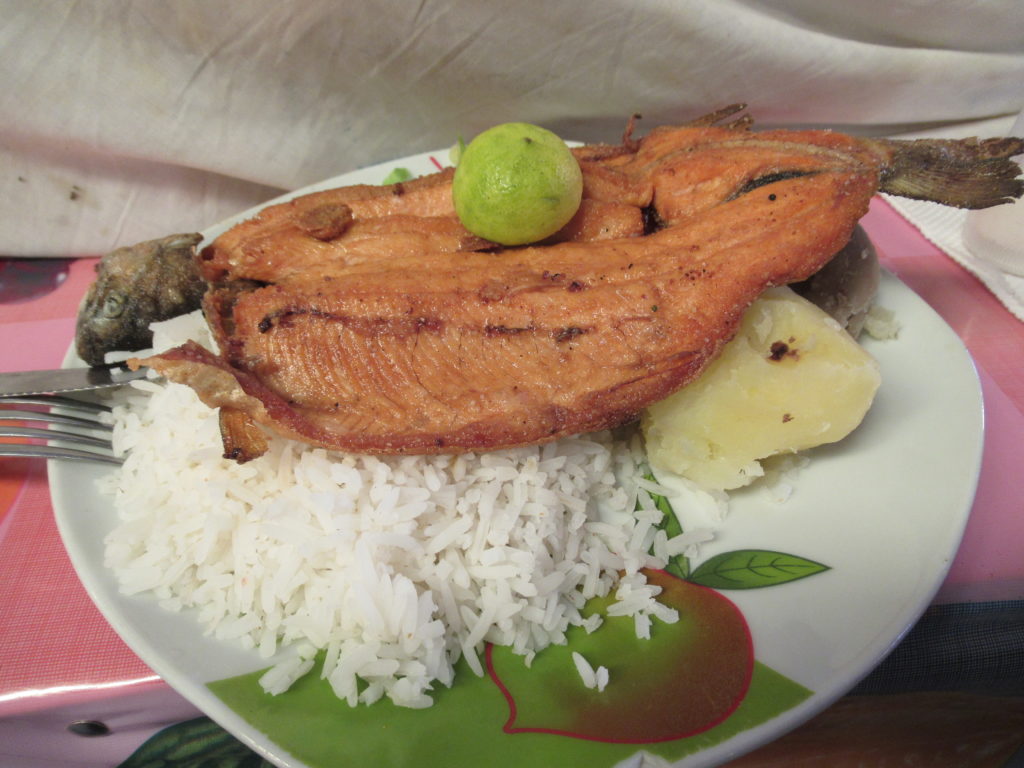
The occasional ‘posh’ menu del dia delivered good quality – such as this one in Sucre which included a starter and a dessert as well! 🙂
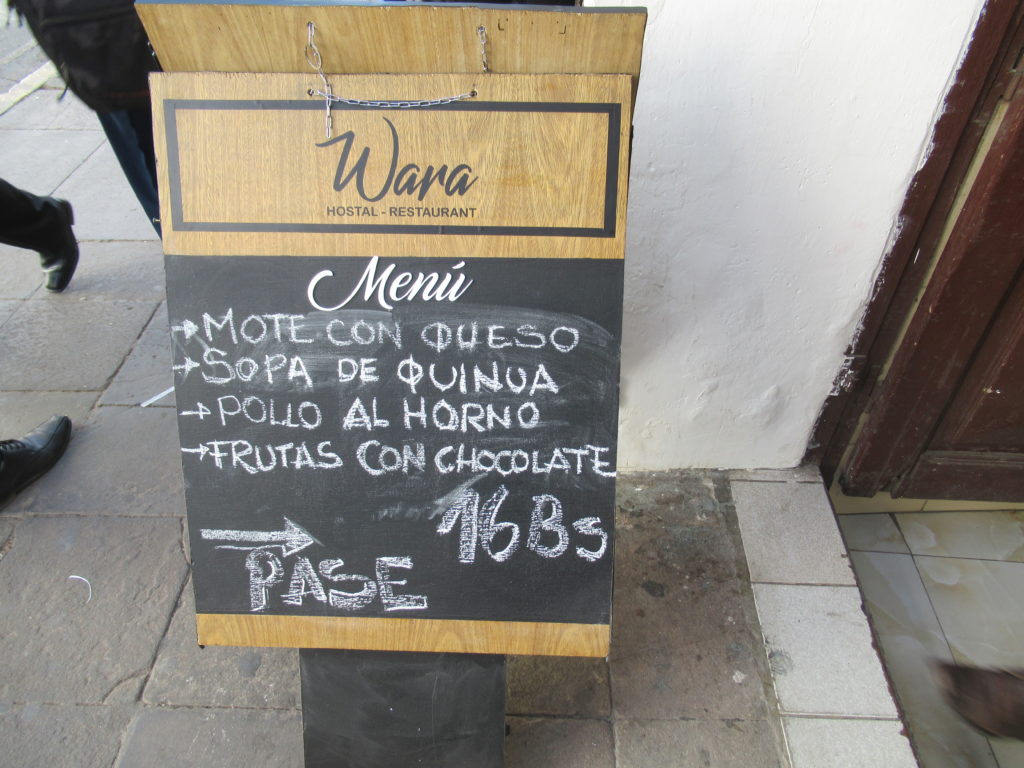
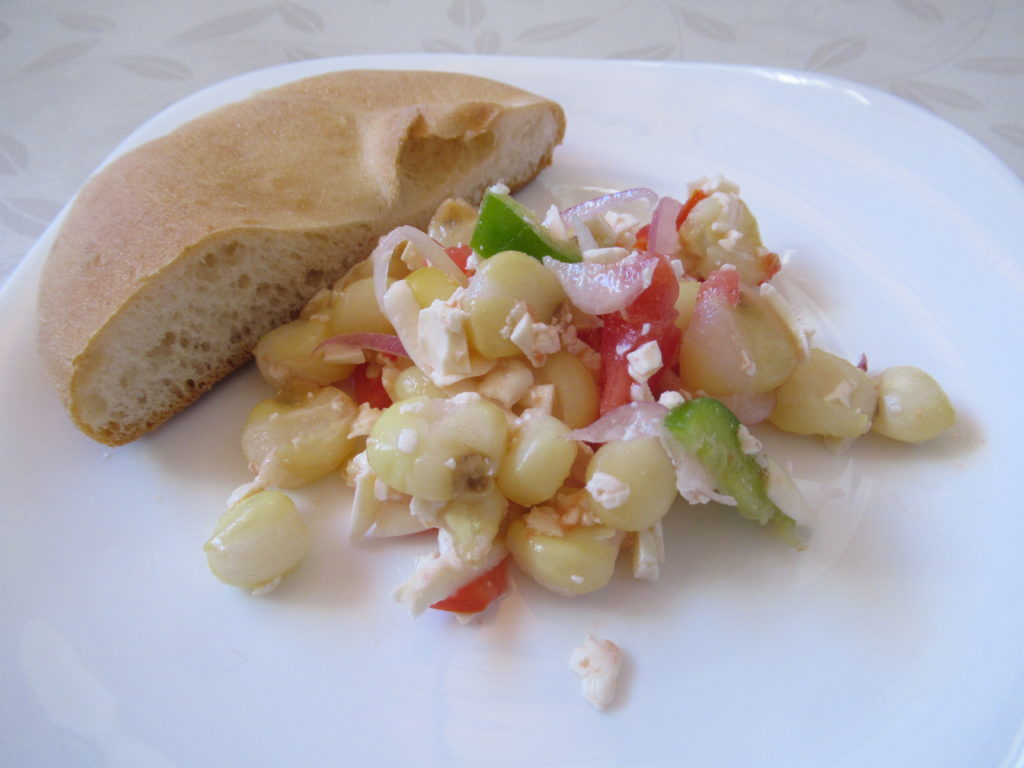
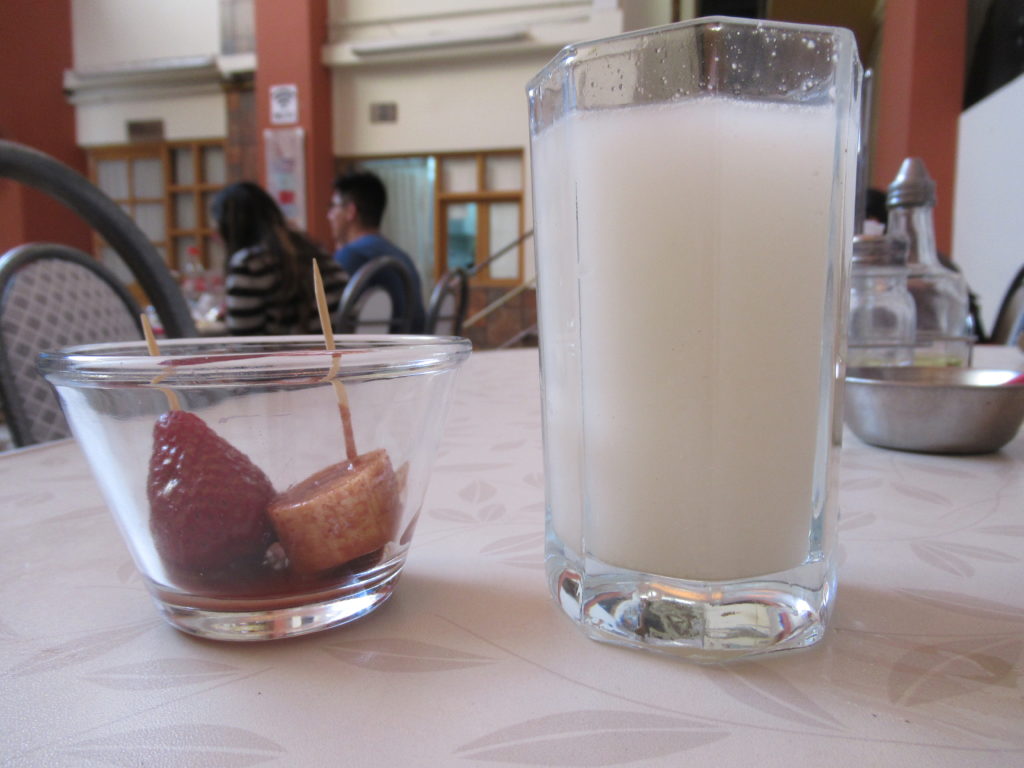
At this point, we should give an honorable mention to a couple of in-theory ‘traditional’ lunch items in Bolivia. The problem with these items is that they are actually quite hard to find!
It turned out that the easiest place to get hold of these, was in a series of chain stores that had opened in La Paz that specialised in ‘traditional’ food. First of all, we have ‘fried cheese with beans on the side’. Yes – this was a welcome break from all the meat and chcken, and it was pretty damn good!
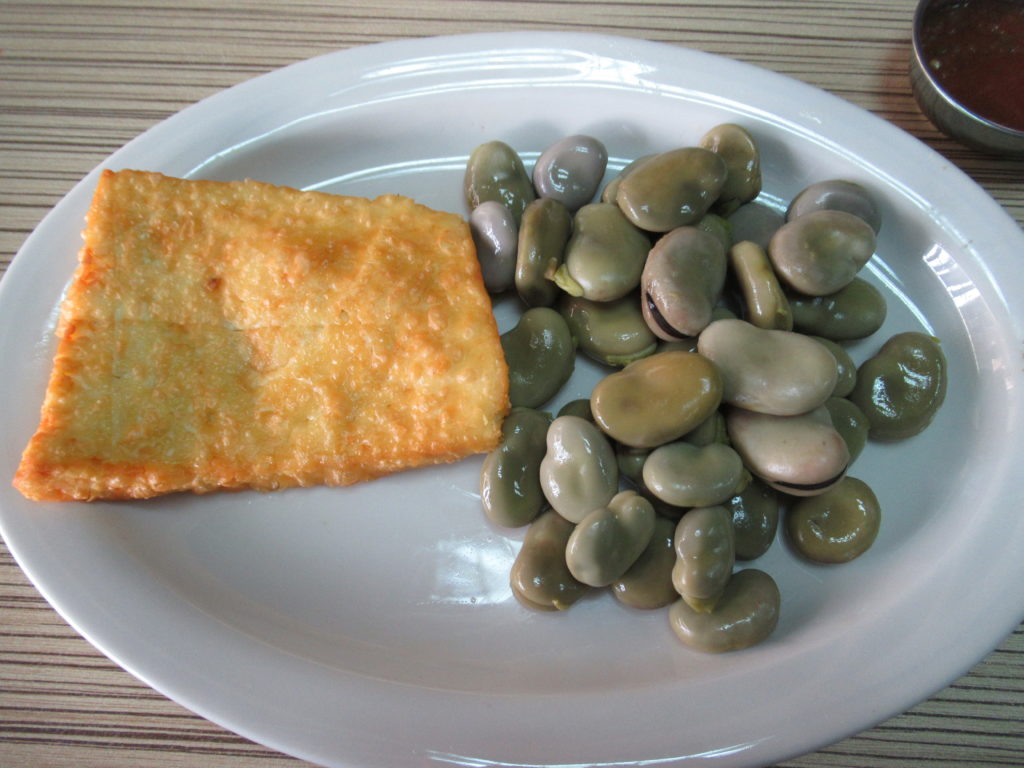
Saving the VERY BEST until last (according to CC anyway.. 🙂 ), we have the ‘plato paceño‘ – this means ‘dish of the people of La Paz’ (more or less…). It consists of fried cheese, potatoes, beans, and corn. Apparently the origins of this dish go back to 1781 when La Paz was under siege by an indigenous movement – so the inhabitants had to eat whatever was growing in the farms near to La Paz.
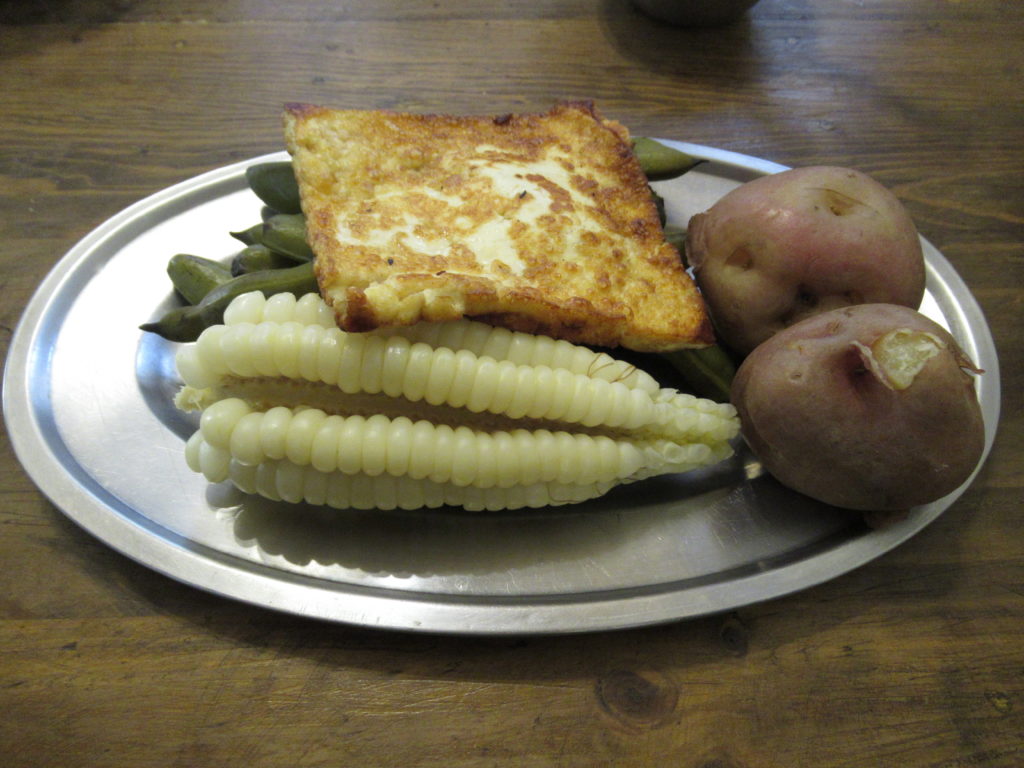
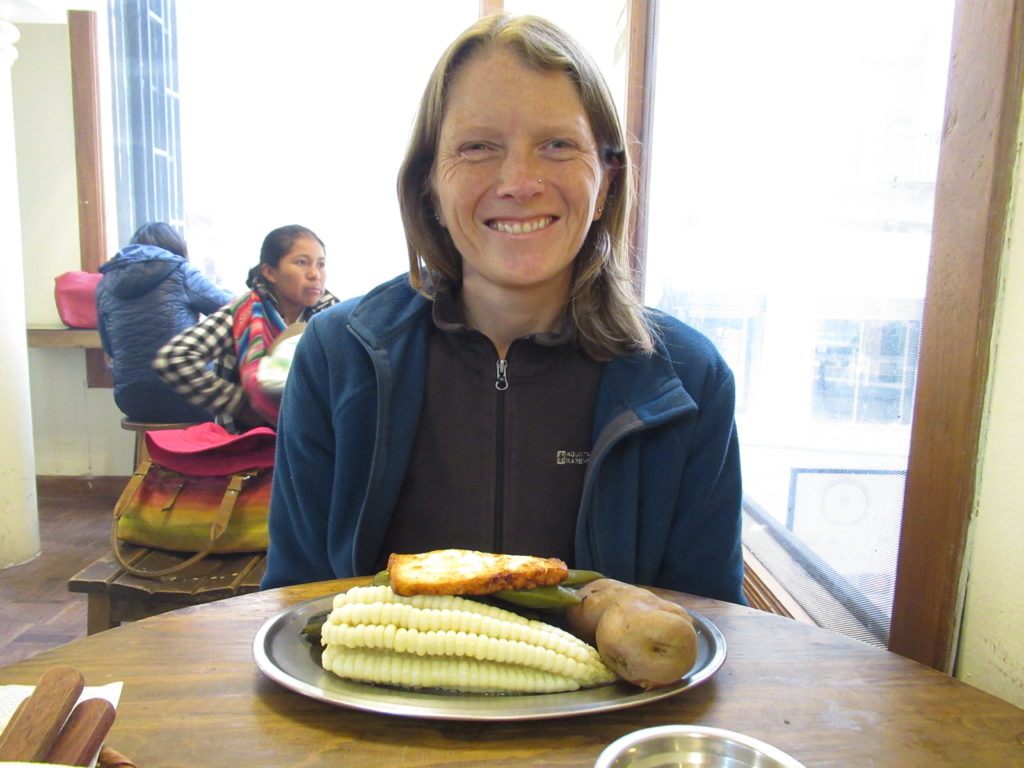
Dinner
Dinner in Bolivia tended to be a bit of a pain – as in most South American countries, lunch is the main meal of the day, and menu del dias for dinner were pretty hard to come by. The remaining options were self-catering, cold food in our room, chicken and chips (you can get chicken and chips pretty much anywhere, anytime in Bolivia), or expensive tourist-style restaurants. We survived on a combination of these options – except that we didn’t very often go to an expensive tourist-style restaurant – as paying four times the price of chicken and chips for tasteless pasta didn’t seem like the best idea…..
Anyway, there was actually another option – takeaway snack food from street stalls. Yes, in Bolivia the lines between what we ate for breakfast, lunch, and dinner were VERY blurred – we often had cereal for dinner 🙂
The go-to snack food for dinner was Papa Rellena – this is everywhere in Bolivia, and it’s made from potato dough stuffed with meat, chicken or cheese. There is also a version made from rice, and a version made from plantain. Sometimes there are hidden treats inside, such as olives or an egg – yes a surprise every time! 🙂
We have a soft spot for papa rellena, as it was the VERY FIRST dinner that we ate in Bolivia.
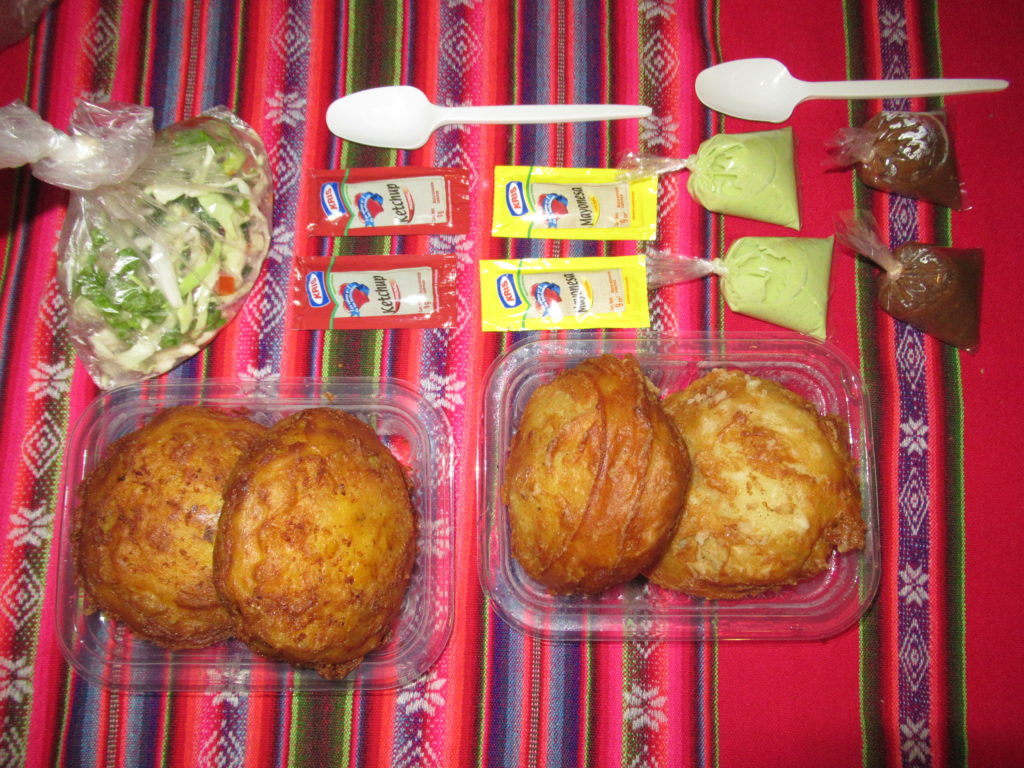
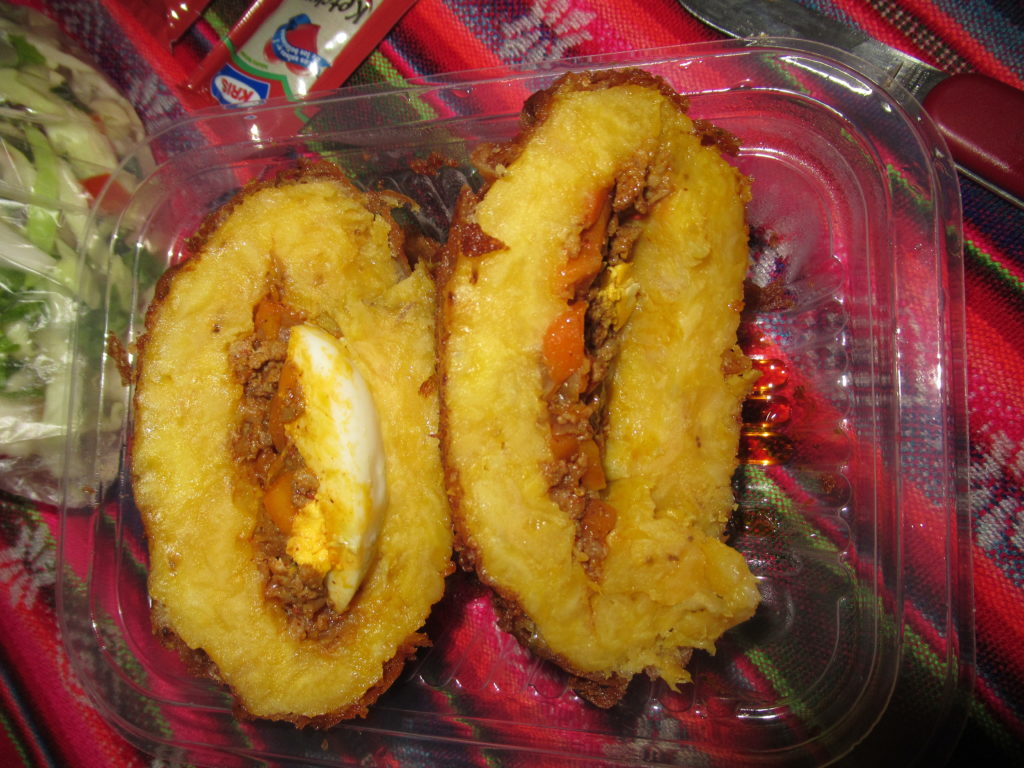
Once we’d had a few papas rellenas, they became a staple part of our diet – not just for dinner! For the record, the ABSOLUTE best ones that we had, were from a stall at the Sunday market in El Alto (but we don’t have a photo of that one 🙁 )
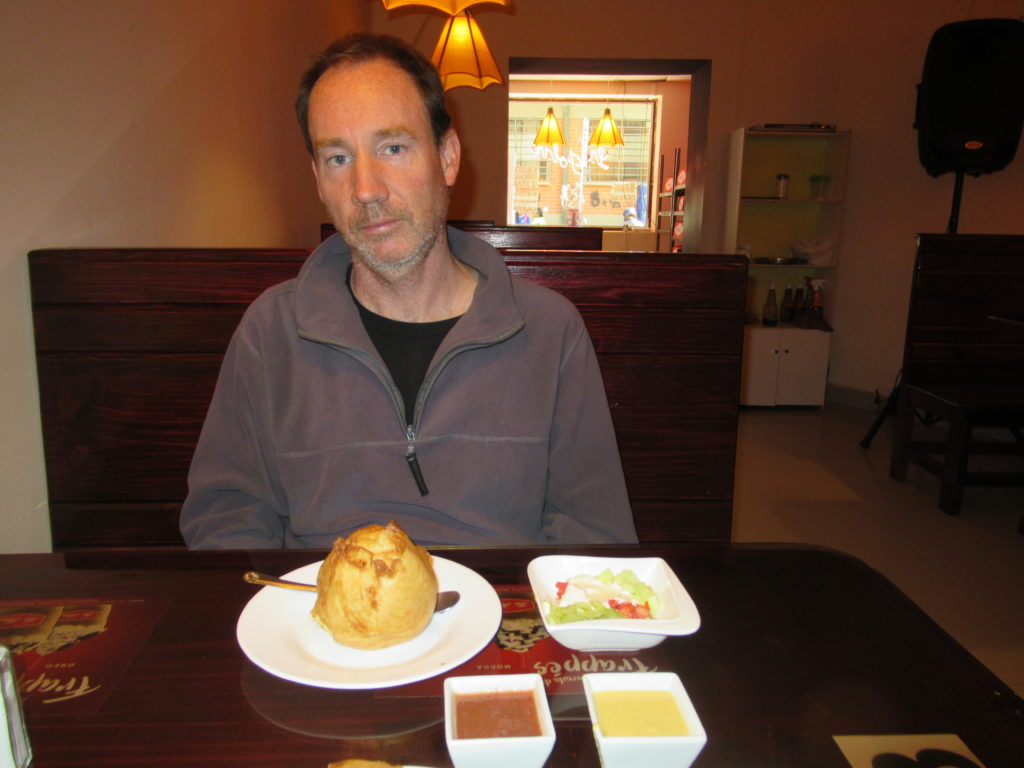
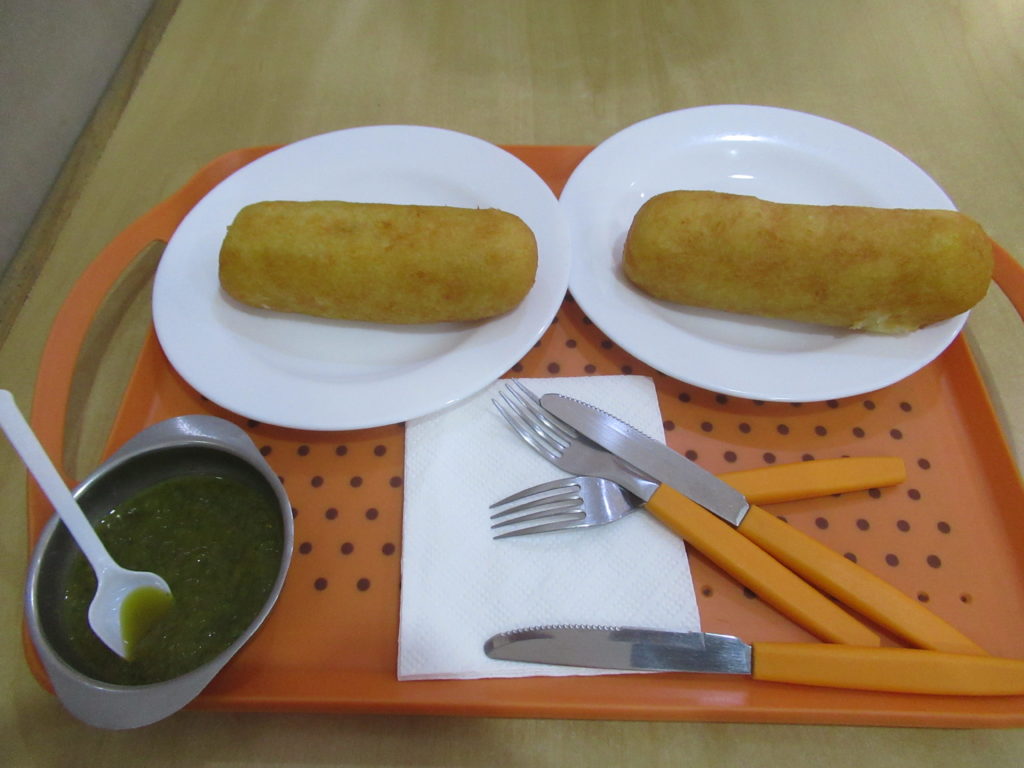
At this point you may have noticed that many of the pictures have a small dish of sauce lurking in the corner. This sauce is called Lllajwa – it comes in lots of different versions, but it’s ALWAYS spicy, and you can ALWAYS get some. There is pretty much no meal that you can buy in Bolivia where you won’t be given this sauce. This is a very good thing, as it’s delicious and spicy, and can make even very bland food taste OK. (which is probably why they have it! 🙂 )
Back to dinners – one of our ‘eat in the hotel room’ favourites was cheese and avocado sandwiches. Avocadoes were cheap, delicious, and very easy to find, and Bolivian cheese was really good. There was only really one main ‘type’ of cheese – it was white, kind of like a cross between fetta and cream cheese. It’s home-made by all the farmers who bring it to the market. Each region makes its cheese slightly differently, and the cheese varies mostly in ‘hardness’, and ‘tanginess’ (according to us….). The good thing is that you can try a bit of each cheese before you buy it 🙂
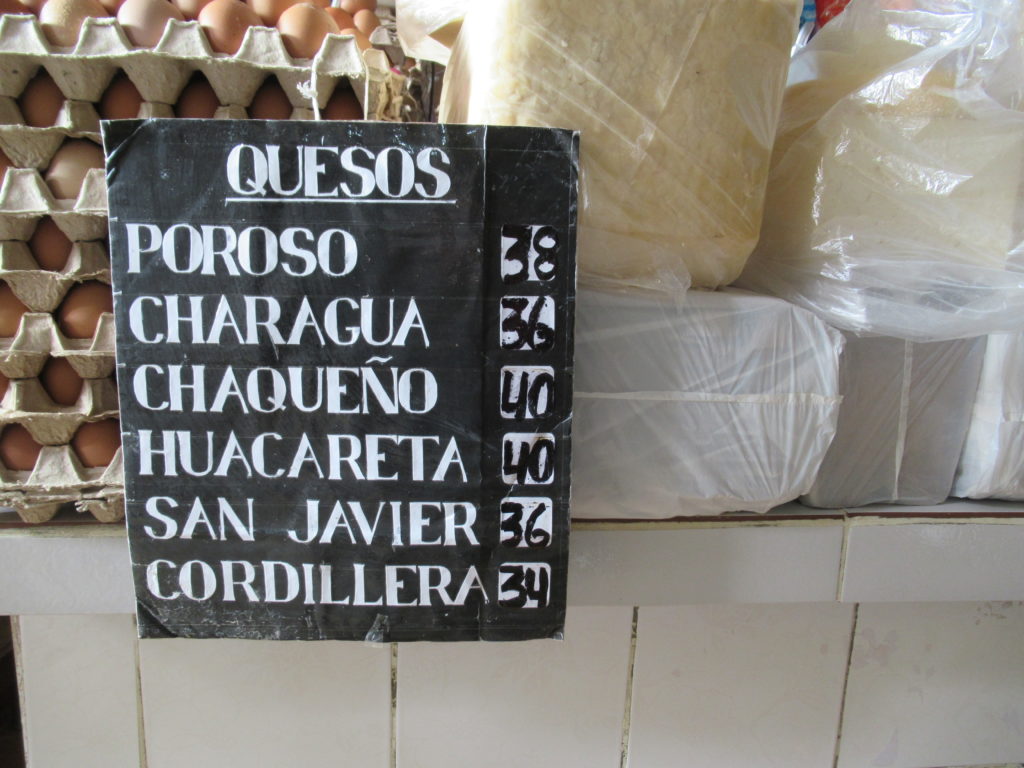
Snacks
With Bolivia being a free-for-all as far as what items were eaten when, it made sense for us to eat lots of snacks as well 🙂
Cheese empanadas were everywhere – to be honest though, they were usually pretty crap 🙁 Lots of tasteless dough, and practically no cheese 🙁
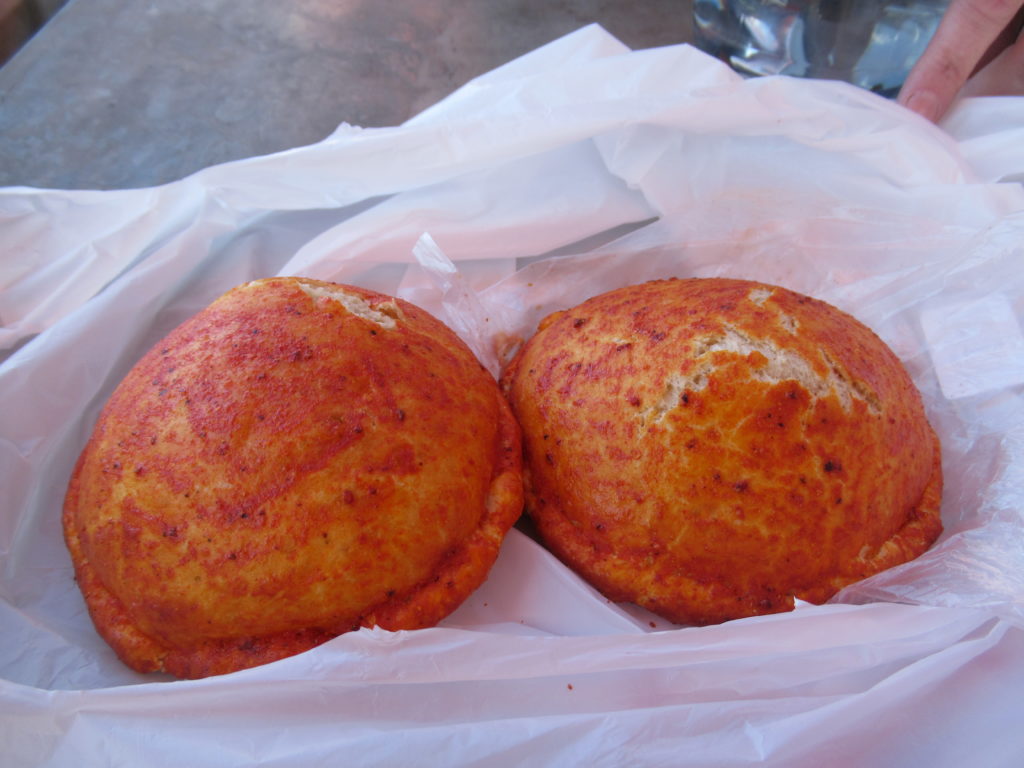

Moving on to sweet snacks – it was always possible to get a cup full of cream/jelly/sugar/artifical substance from somewhere. These were a bit sickly in our opinion, but we had a go…
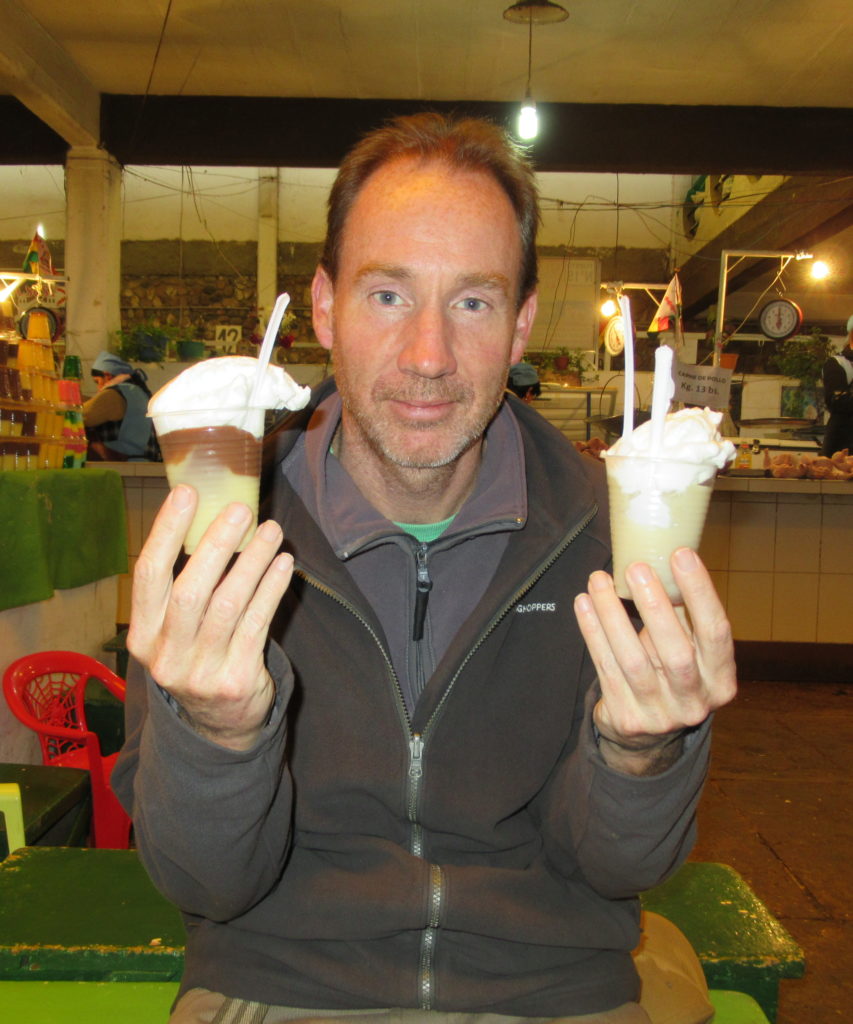
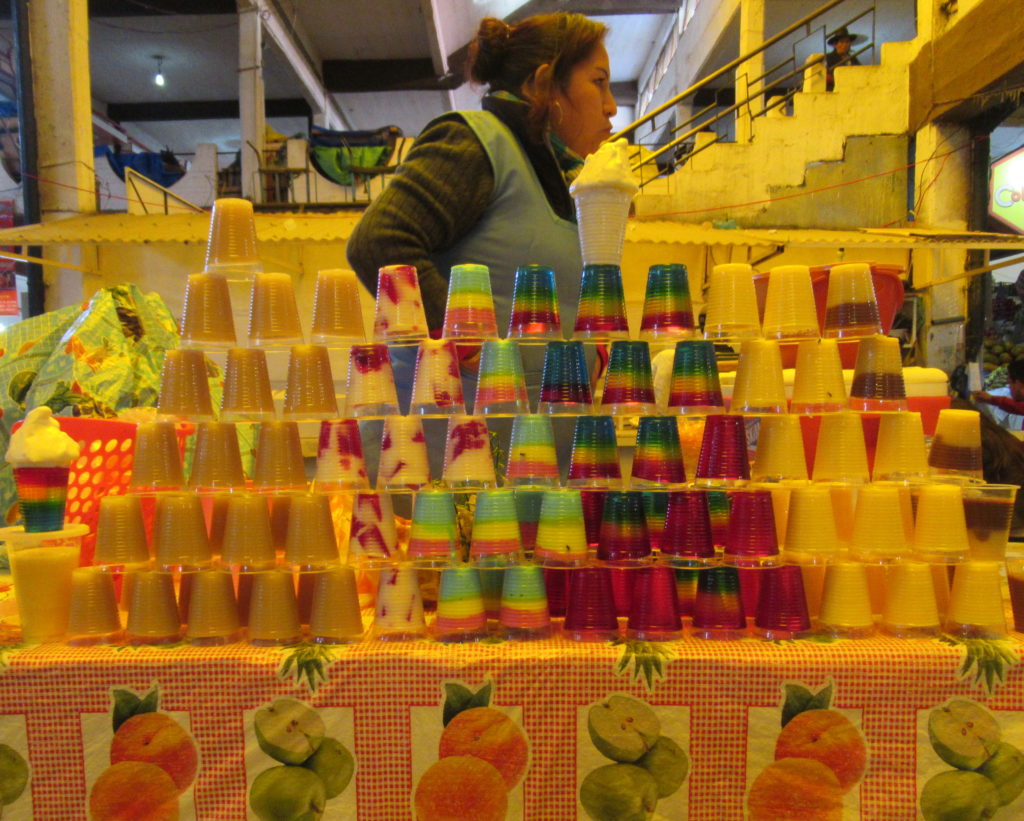
Next up – alfajores – yay! Bolivia did some pretty good ones…
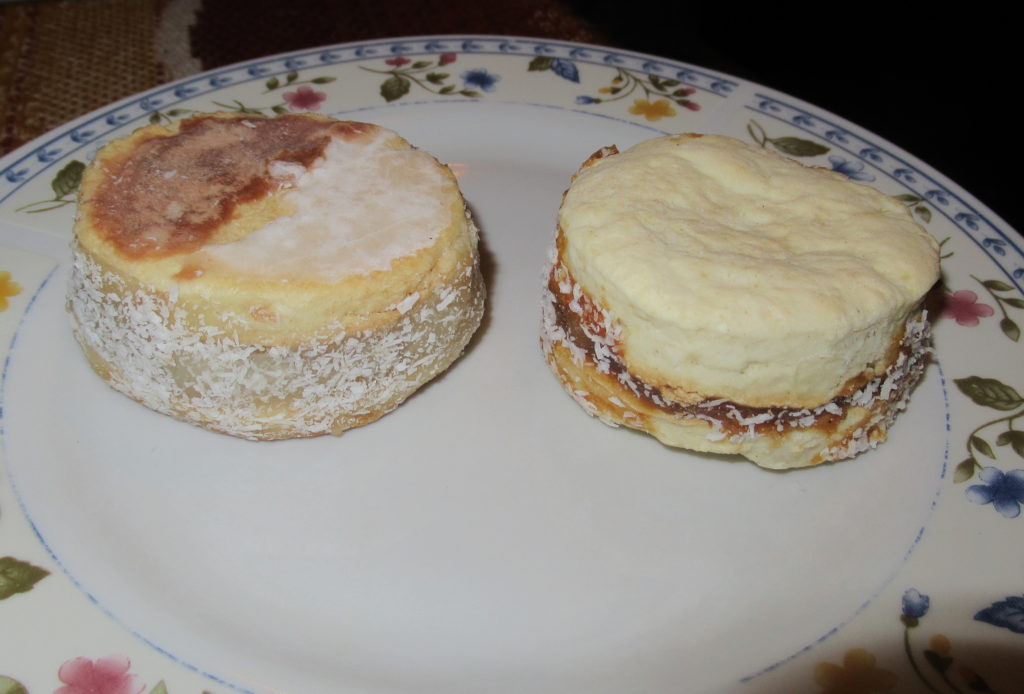
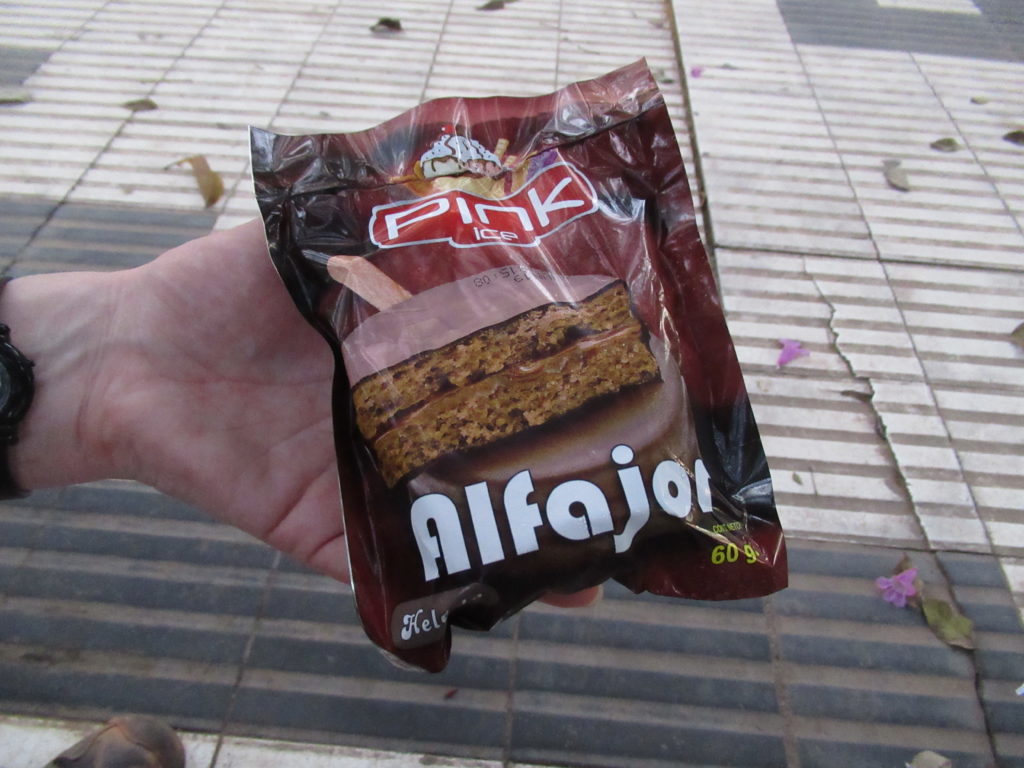
When it came to sweet cakes and biscuits though, the eastern lowlands of Bolivia were the place to be! There were a lot more cake shops, and a lot more variety – maybe the ‘cake-eating influence’ of close-by Brazil was having an effect 🙂
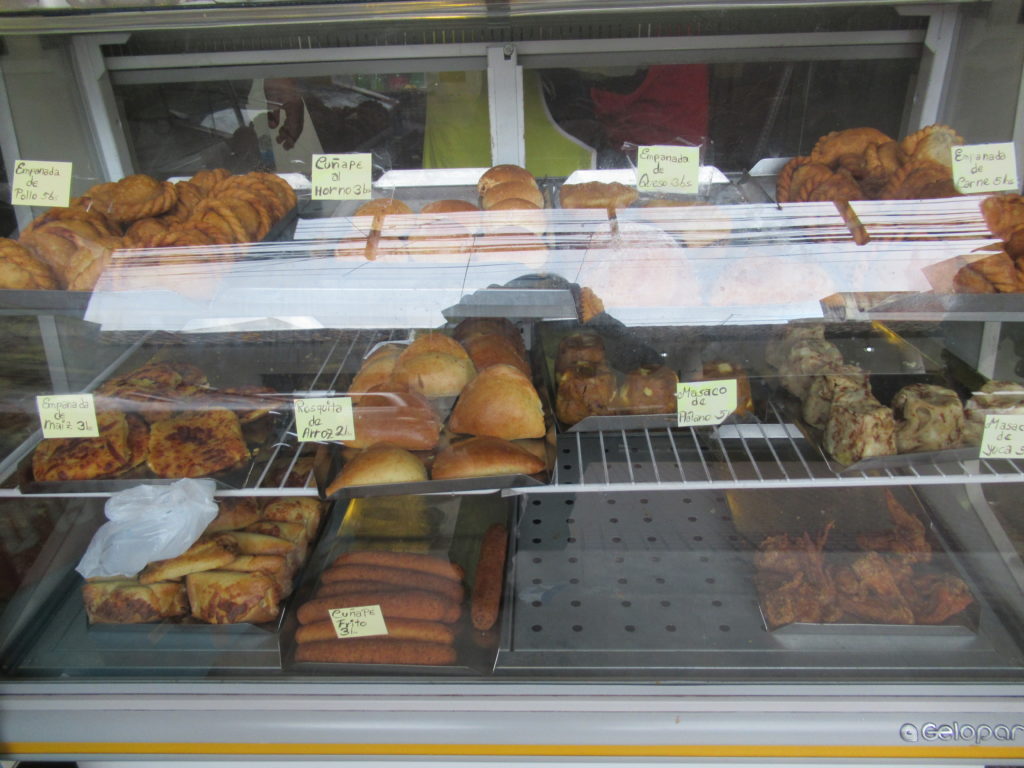
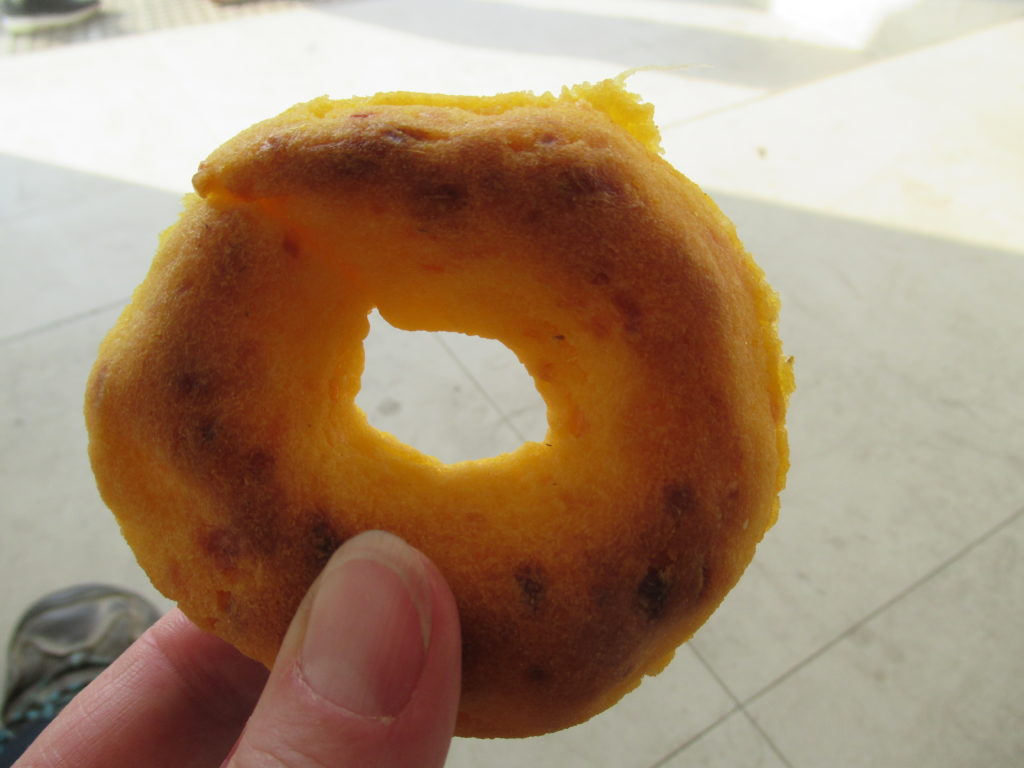
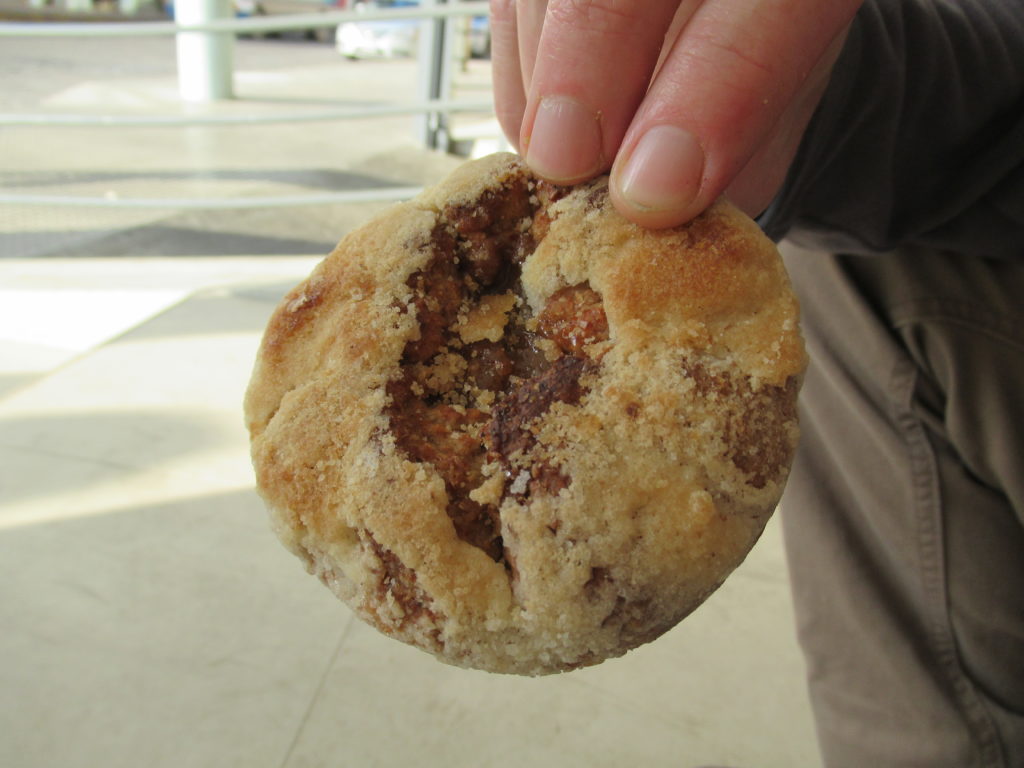
A special mention must go to ‘Tablillas de leche ‘ – this stuff was awesome! They tasted a bit like fudge, were made from milk and sugar, and were readily available on the streets of Santa Cruz de la Sierra.
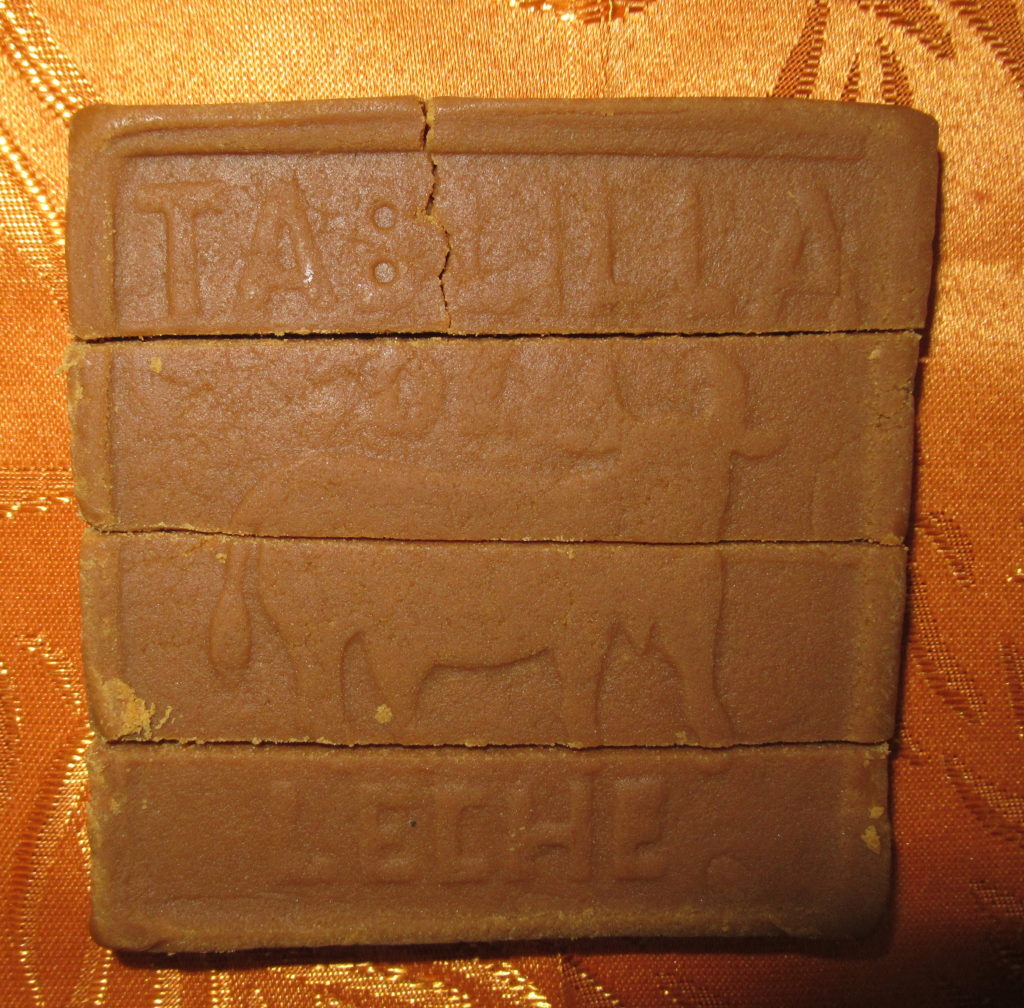
When we were up in the less ‘sweet-orientated’ altiplano, there were two snack items that we consumed nearly evey day. One was ‘fried salty beans’, and the other was ‘chocolate-covered corn’. Yes, I can just hear you thinking that they don’t sound like amazing snacks… but TRUST ME – they were delicious! 🙂
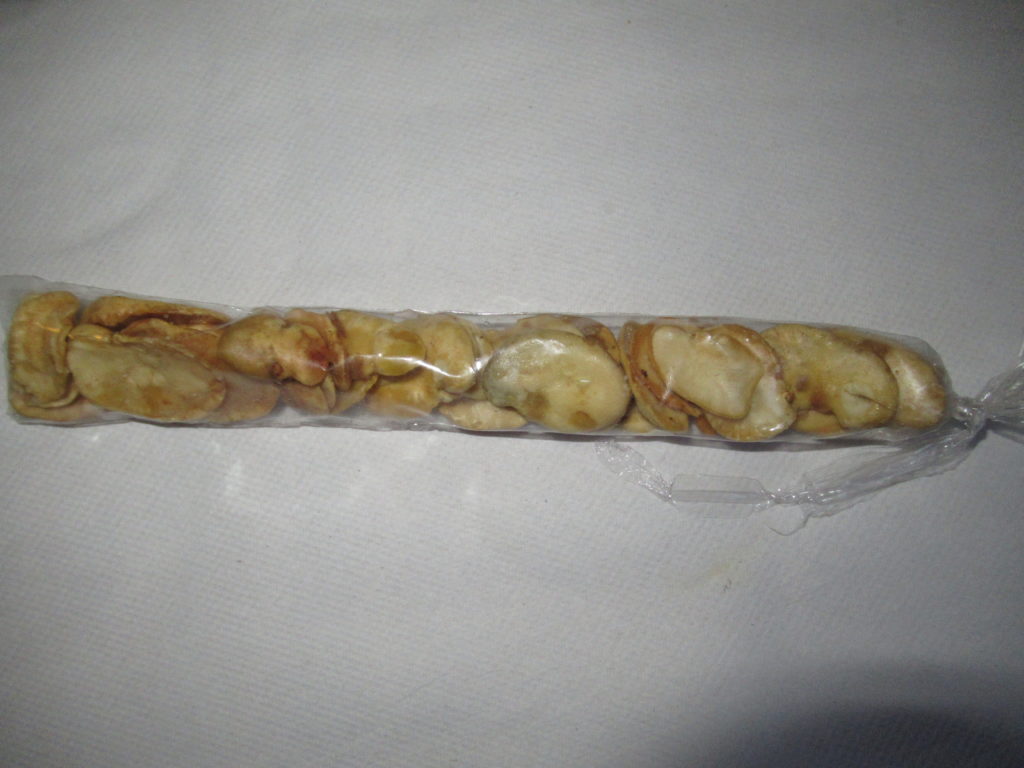
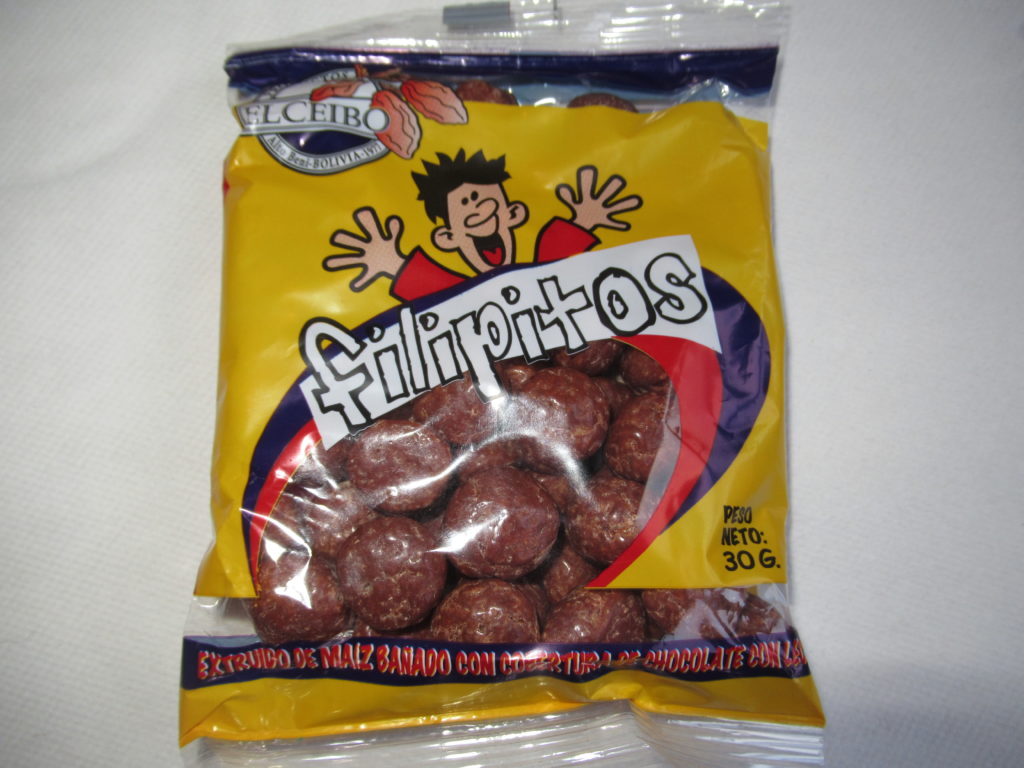
Last, but not least, we have the more ‘normal’ snacks…
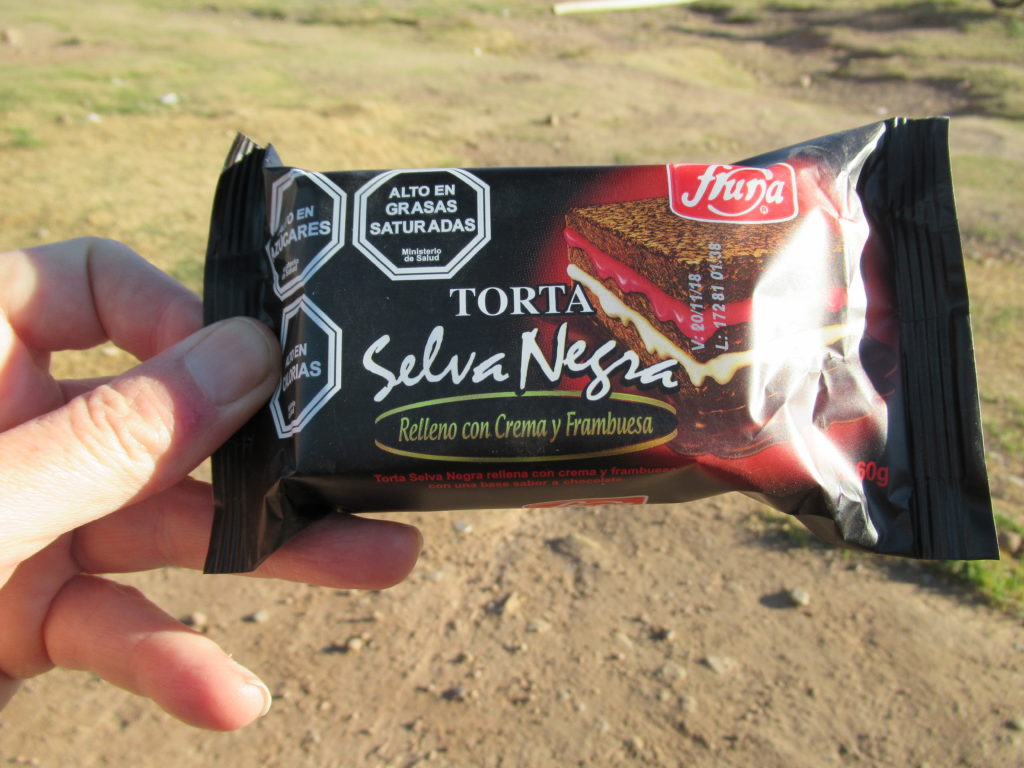

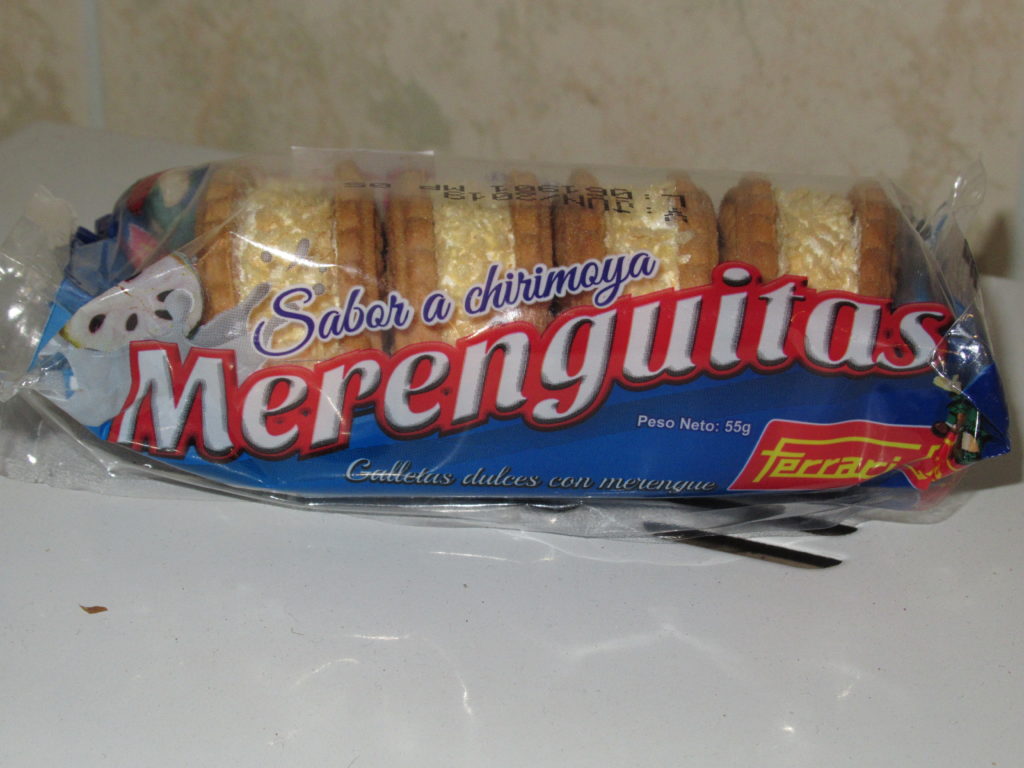
Drinks
And finally on to drinks… you already know how awesome api is, so what else is there? Well, there’s a few unusual Bolivan specialities, such as a drink based on kaniwa – a grain kind of like quinoa, and another corn-based drink called ‘wilcaparu’. These two were OK…. but not in the same league as api.
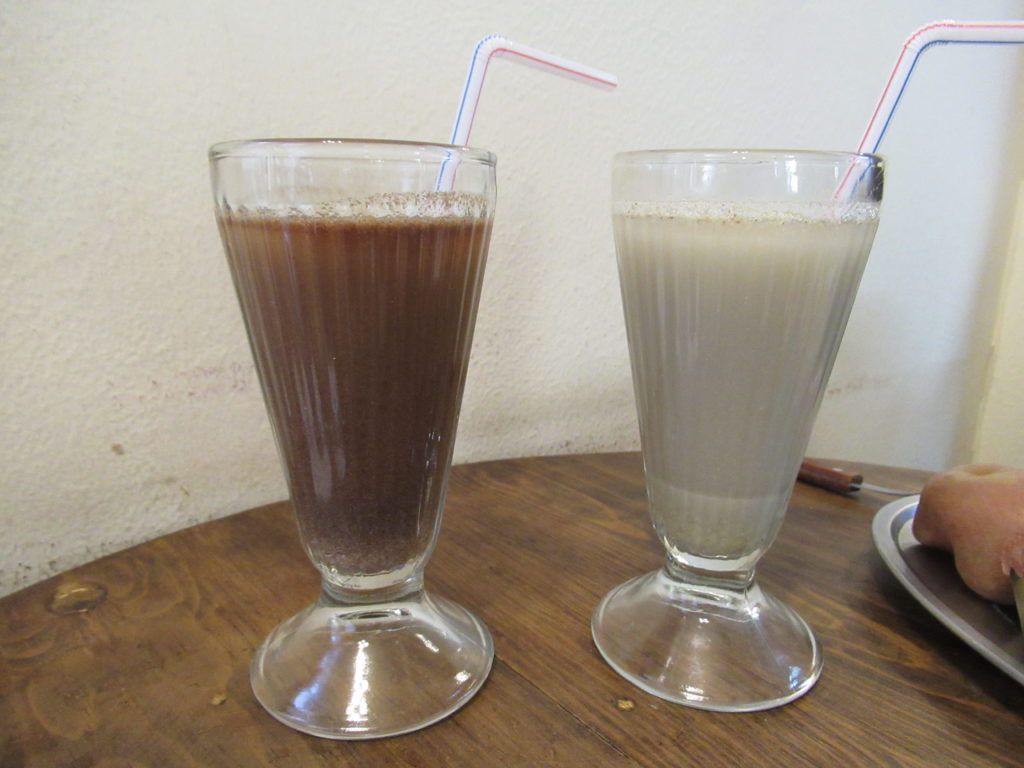
A somewhat better Bolivian speciality was mocochinchi – this is a drink made with peaches and cinammon – and you even get to eat the peaches! It’s very much like the mote con huesillo of Chile, but without the corn.

Next up, we have coca tea. The coca leaf is part of Andean culture, and you can get tea, sweets, and all manner of other products made from this leaf. It is supposedly good at helping with the symptoms of altitude sickness, and the tea doesn’t taste too bad at all. We drank quite a lot of this.
This is the same leaf that is used to make cocaine, and if you believe the amounts stated in wikipedia, then six cups of coca tea has the same amount of alkaloids as a line of cocaine?! Really?! Well we never drank more than two cups in a day… so who knows! 🙂
Also, drinking this tea can cause you to fail drug tests too, and this tea is actually ILLEGAL outside of the Andean countries of South America – unless it has been processed to have the alkaloids removed… so not the best idea for a gift to take home… 🙂
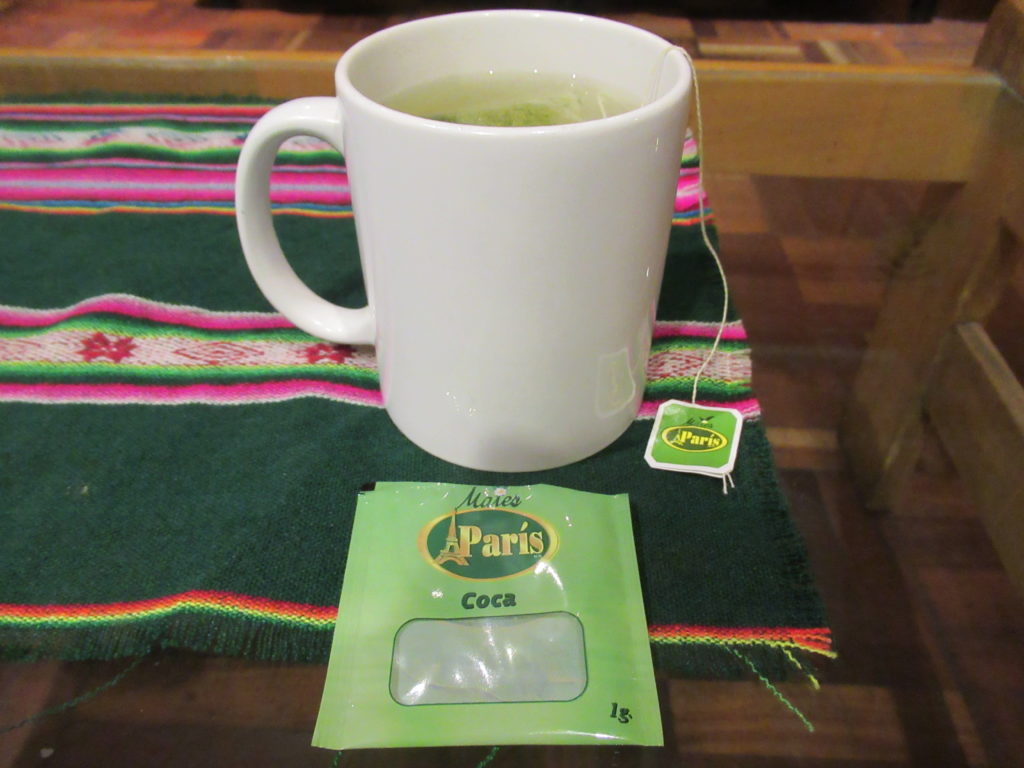
Coffee in Bolivia was generally pretty rough – anything good that they grow there gets sent overseas. We found a ‘posh’ bag of coffee in Sucre though, and treated ourselves 🙂
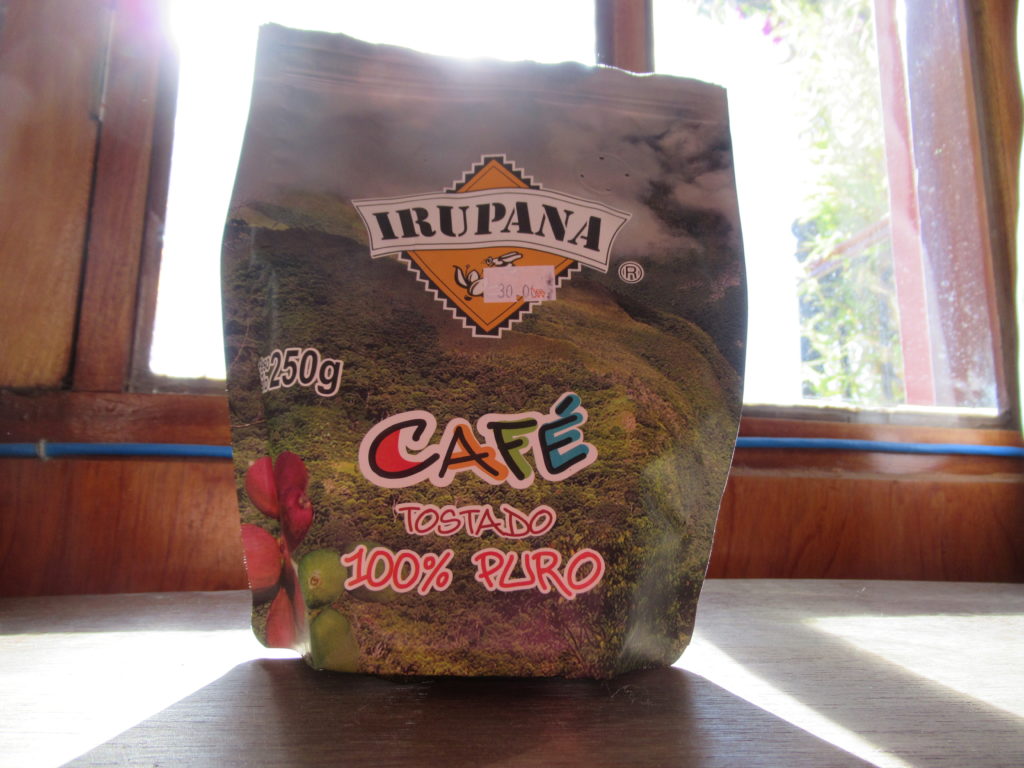
Surprisingly, Bolivia has a wine region! Yes, there is a small part of Bolivia that is not freezing or tropical – it is the Tarija department – we didn’t visit this area, but we did try a bottle of wine from there – and it was actually not that terrible – but not awesome either… but that might be because we bought the cheapest bottle! 🙂
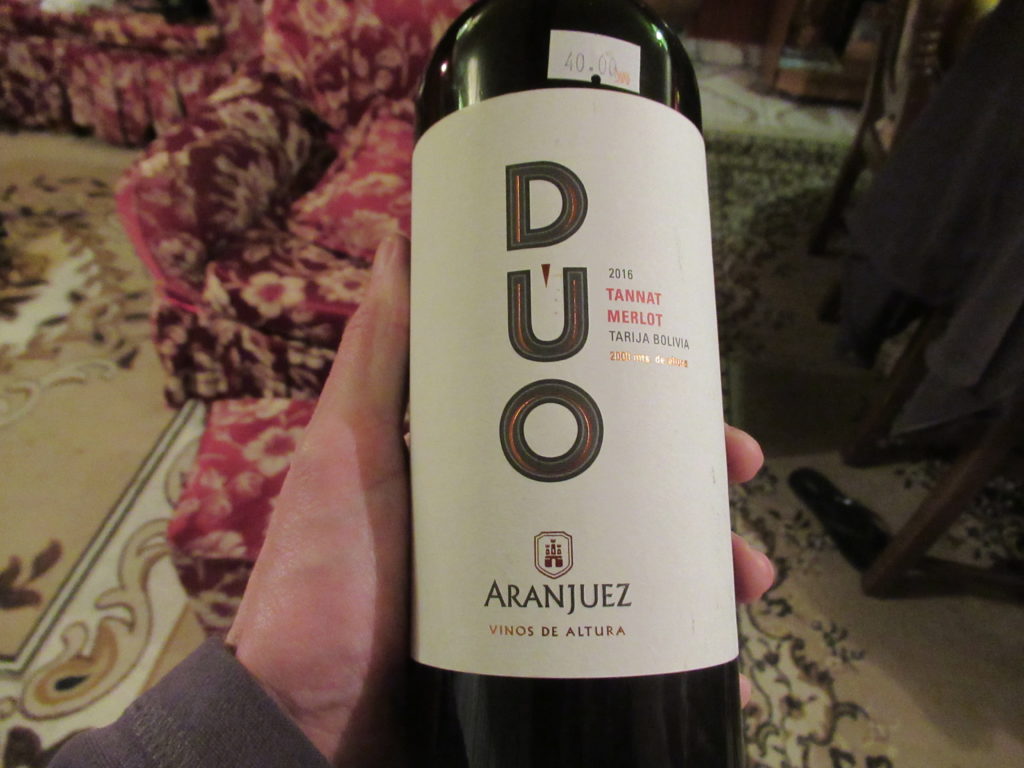
And finally, we come to soft drinks…. there was not much unusual on offer, but they did have a good local alternative to coke – ‘Cascadita’…
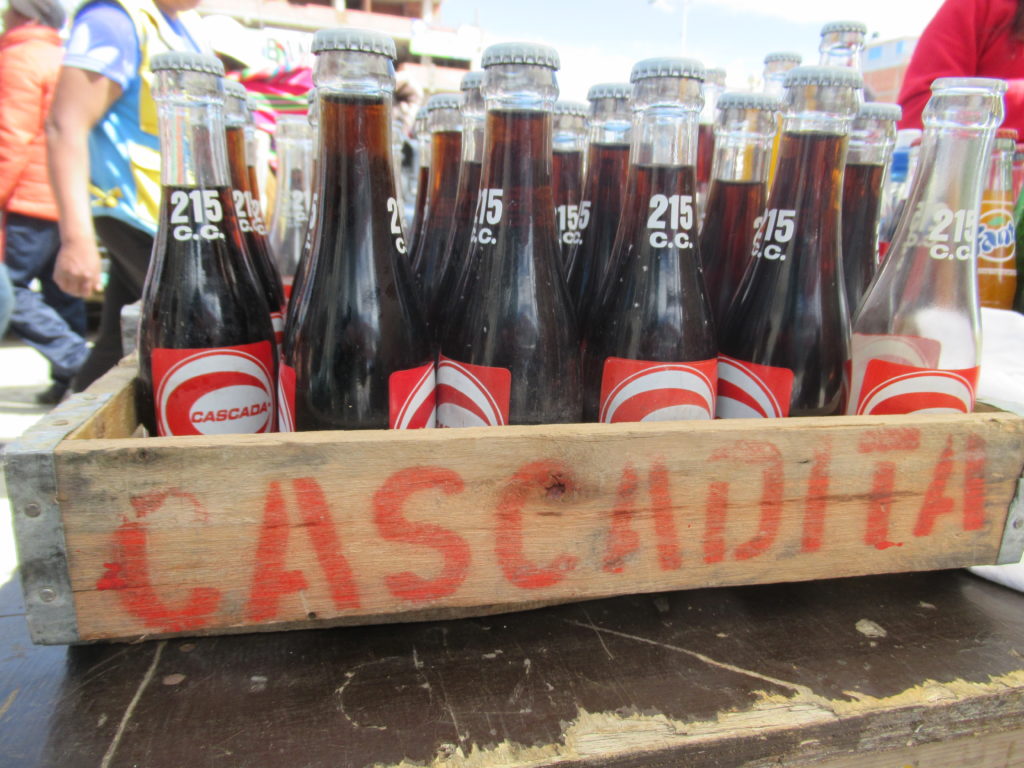
All in all, I would have to say that the food in Bolivia was pretty variable – HOWEVER, there were quite a few stand-out items that were totally awesome – and most of the time we quite enjoyed what we had in Bolivia – so overall a thumbs up… 🙂
